After our overnight crossing of Davis Strait, we arrived in Sisimiut, Greenland on the morning of August 1st and cleared customs. The second largest city in Greenland after the capital Nuuk which lies 320 km (200 mi) to the south, Sisimiut has a population of 5,582, mostly Greenlandic Inuit. Although the town was founded in 1756 by the Danish as the mission and trading station Holsteinborg, it has been occupied for 4500 years, including the Thule people (1200-1400 AD) who are ancestors of the modern Inuit. Following colonization and the Napoleonic Wars, Greenland, originally a dependency of Norway (the Norse settled here in 1000 AD), became part of the Kingdom of Denmark in 1919 (contested by Norway but ultimately settled in court in 1931). Greenland has its own parliament (home rule) and Greenlanders also have Danish citizenship. Here you see the port and off to the right is the Royal Greenland fishing fleet freezing house. Sisimiut’s main industry is fishing, primarily shrimp as well as cod, turbot, haddock, saithe (pollock) and crabs.
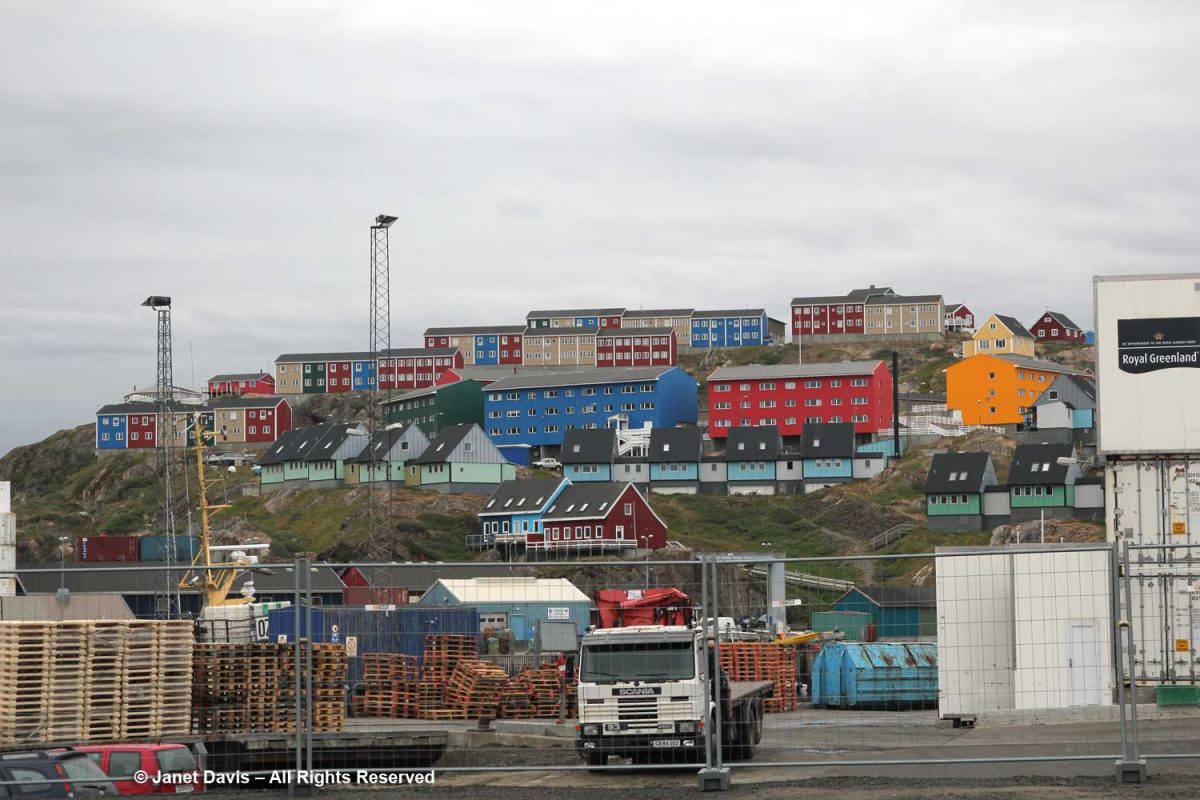
Like other Greenland towns, Sisimiut’s houses look like they came out of a paintbox, so vivid are the colours. They are a mix of traditional, single-family houses, and communal housing in prefabricated structures shipped from Denmark. An apartment block built in 1966 turned out to be a less-than-ideal accommodation for fishermen who had to keep their equipment and nets along with their catch on the balconies. That building was torn down in 2012.
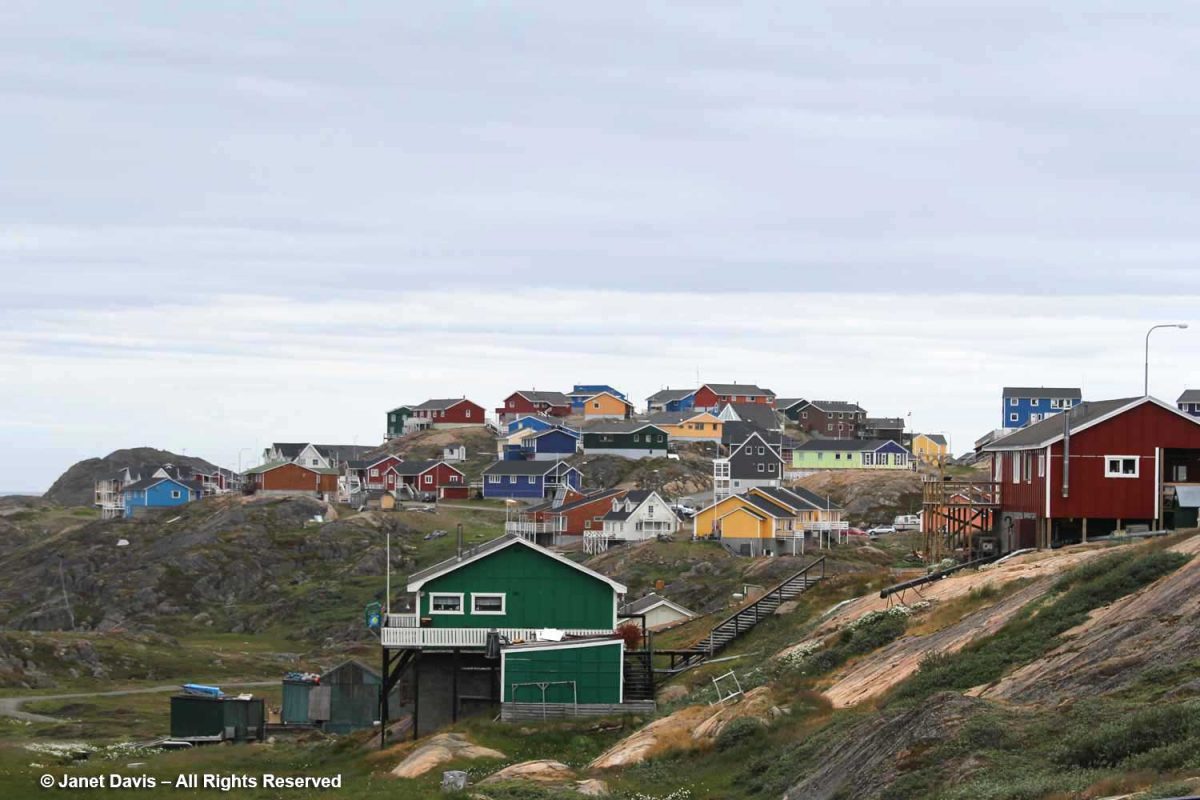
As in Nunavut, buildings in Greenland are constructed on high ground and on elevated foundations drilled right into bedrock.
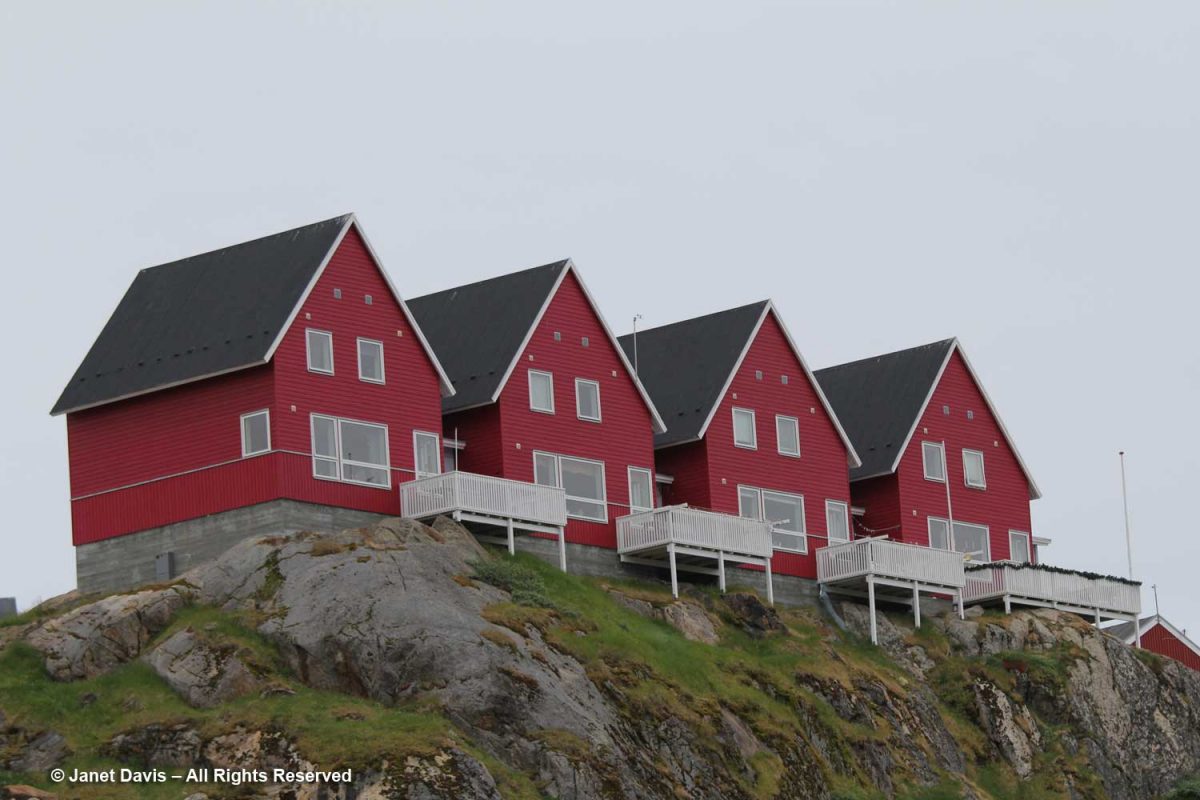
The harbour was crowded with fishing boats…..
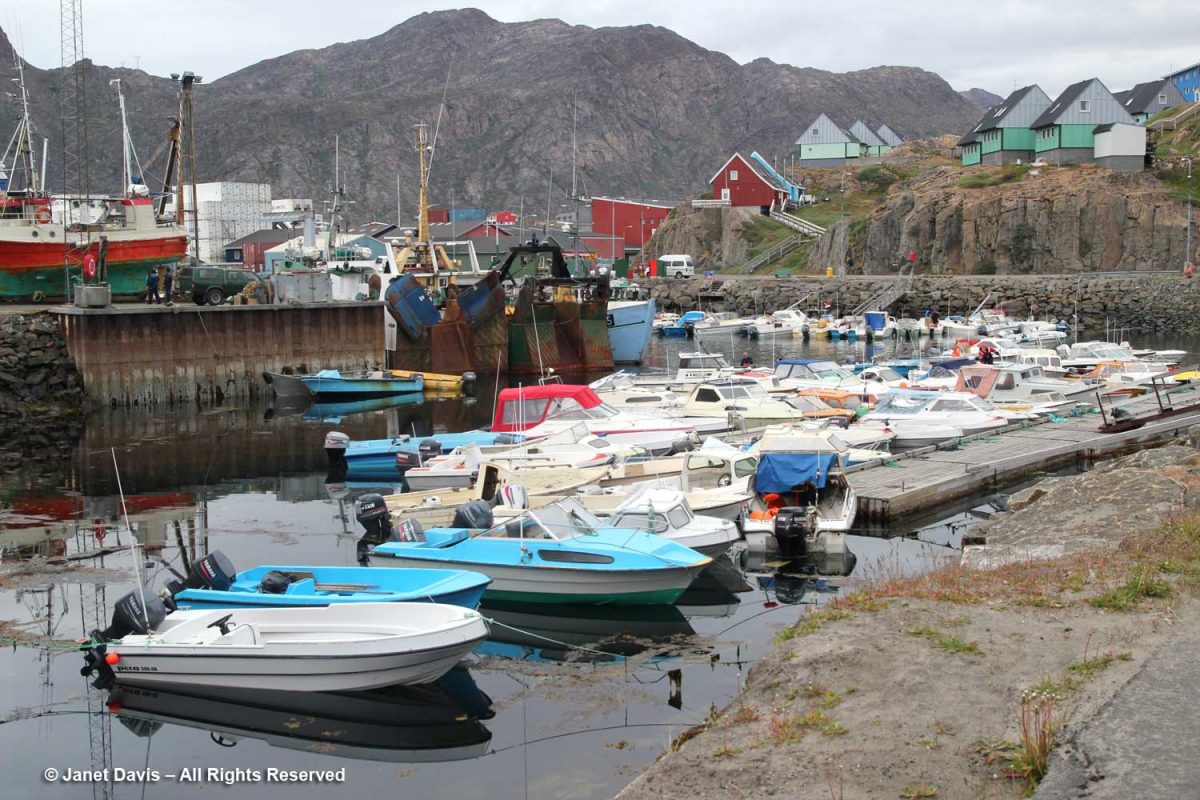
….. and some sat at anchor in a quiet bay.
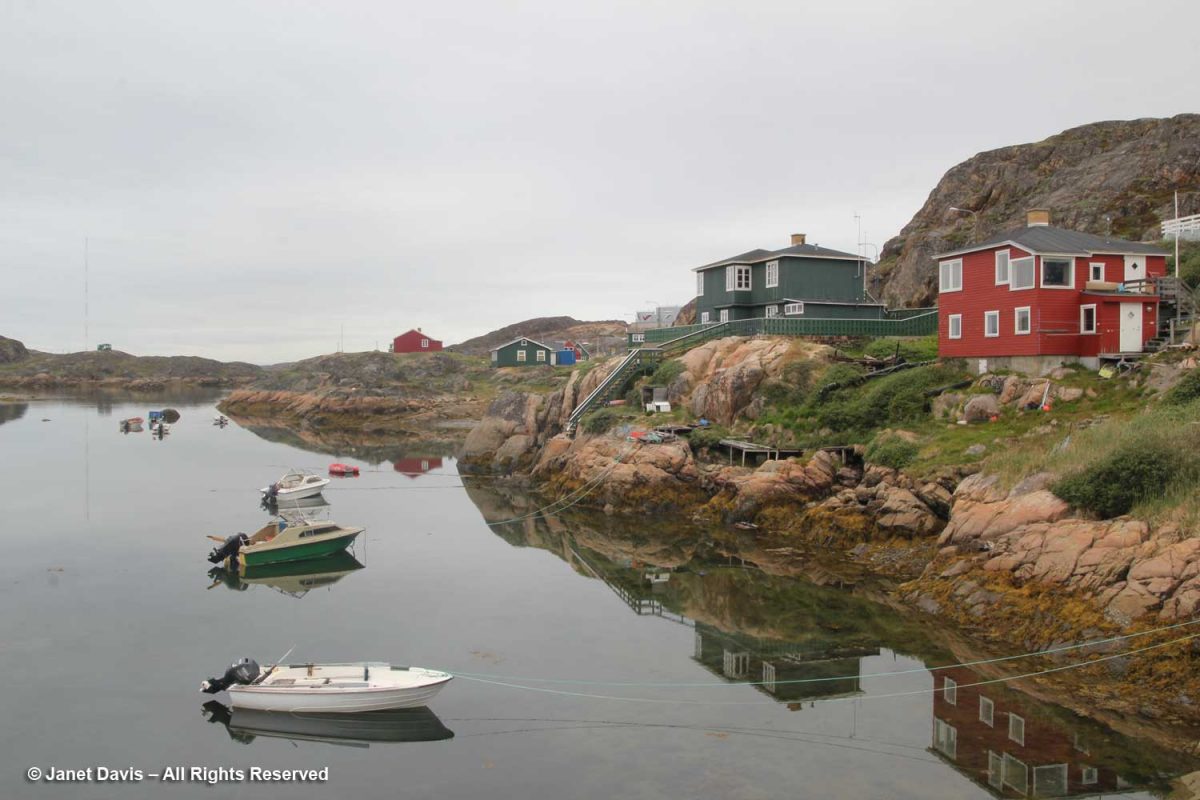
We took a walking tour of the town, passing by houses with Iceland poppies (Papaver nudicaule subsp. radicatum) in flower behind fences…..
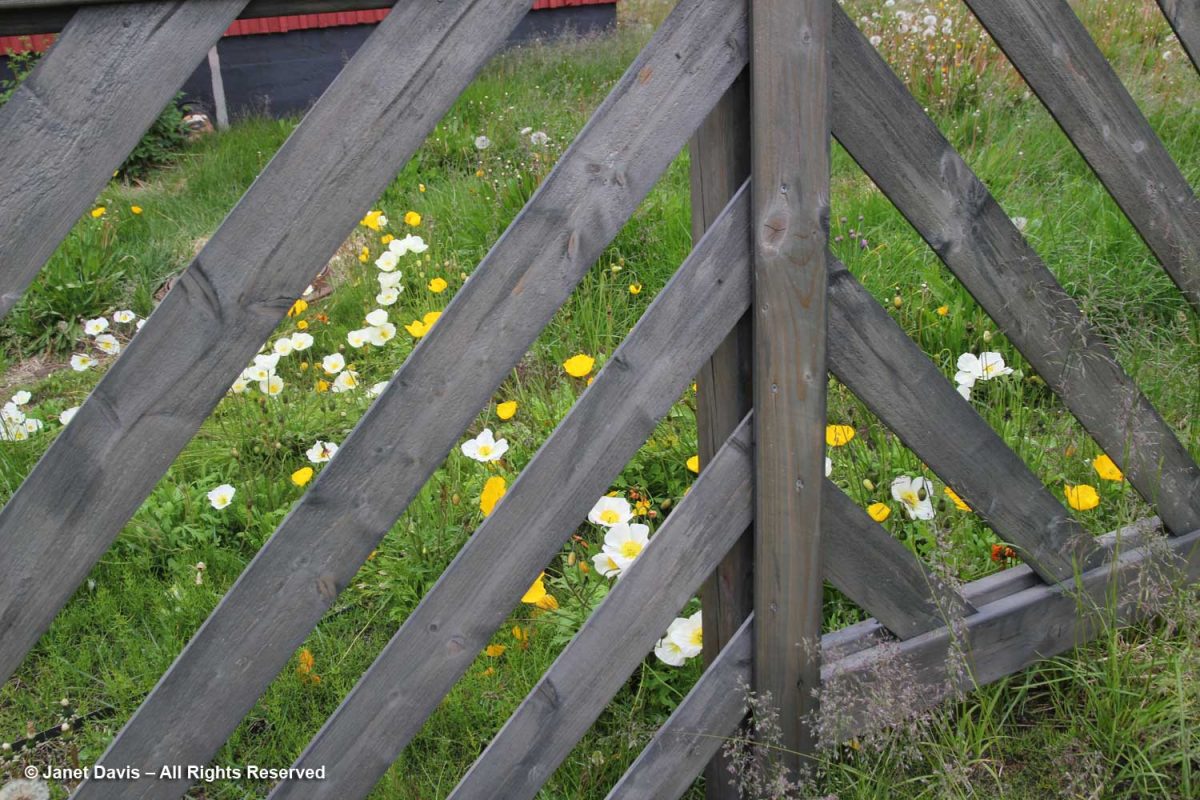
…. and fields of white cotton grass (Eriophorum scheuzerii) grew in abundance.
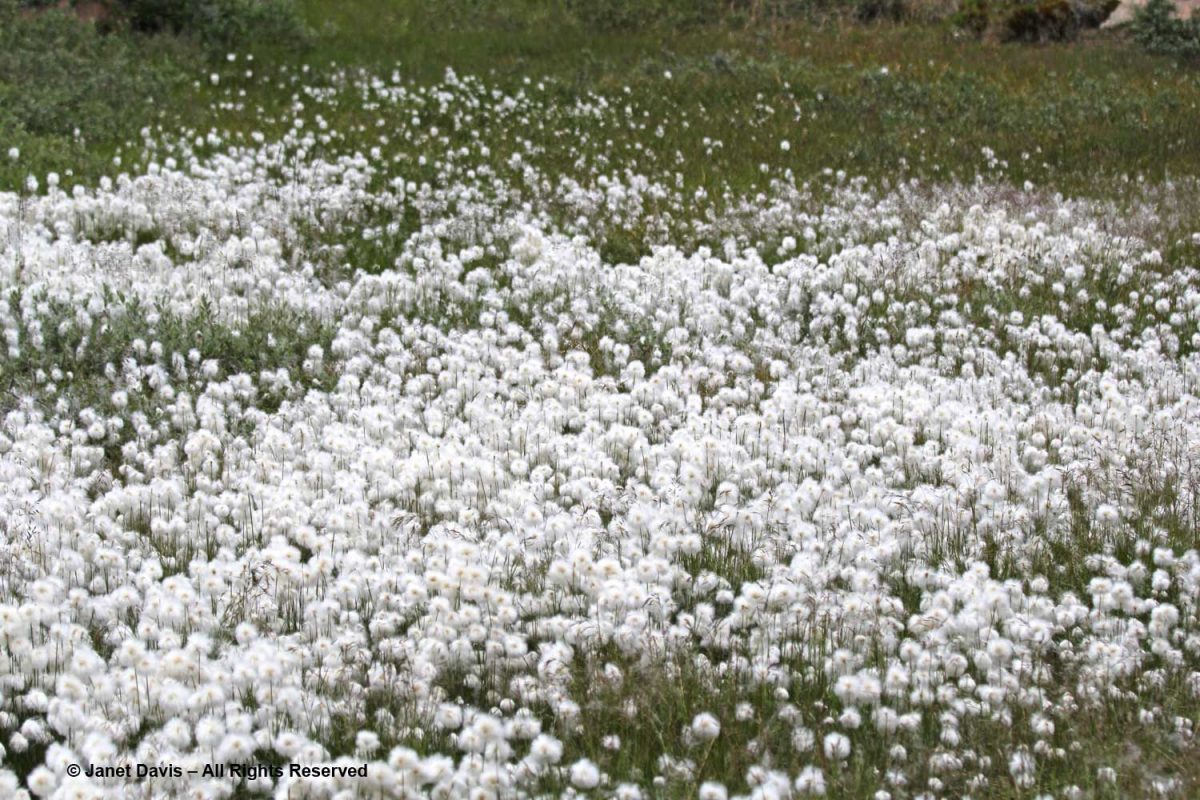
We saw dwarf fireweed (Chamerion latifolium)….
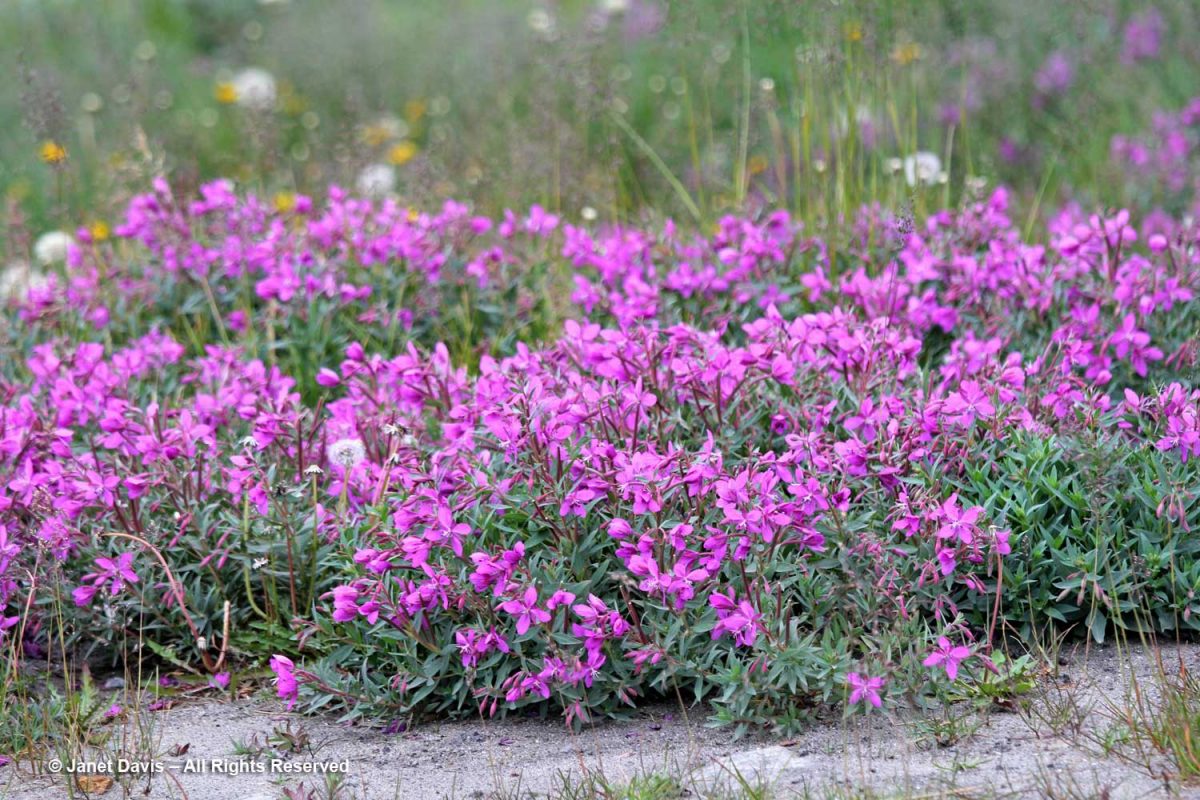
…. and alpine bistort (Bistorta vivipara).
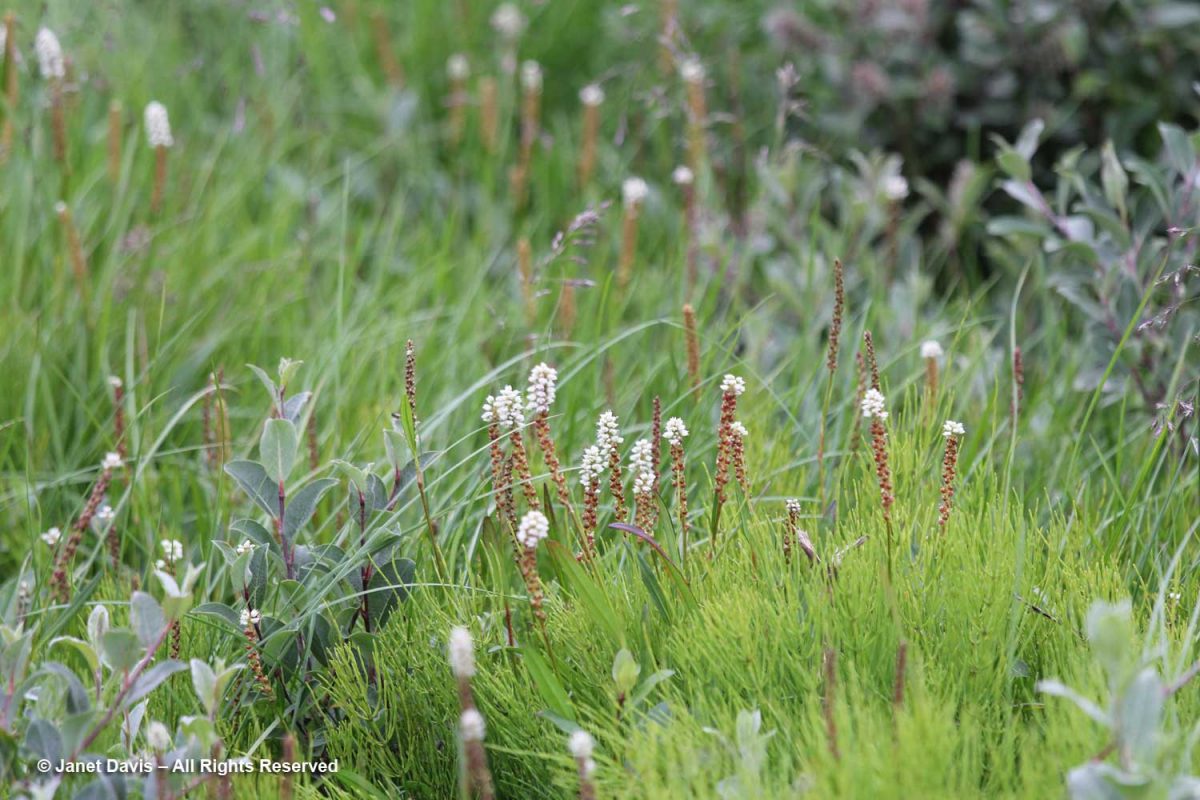
Flies were foraging on the false mayweed, aka seaside chamomile (Tripleurospermum maritimum).
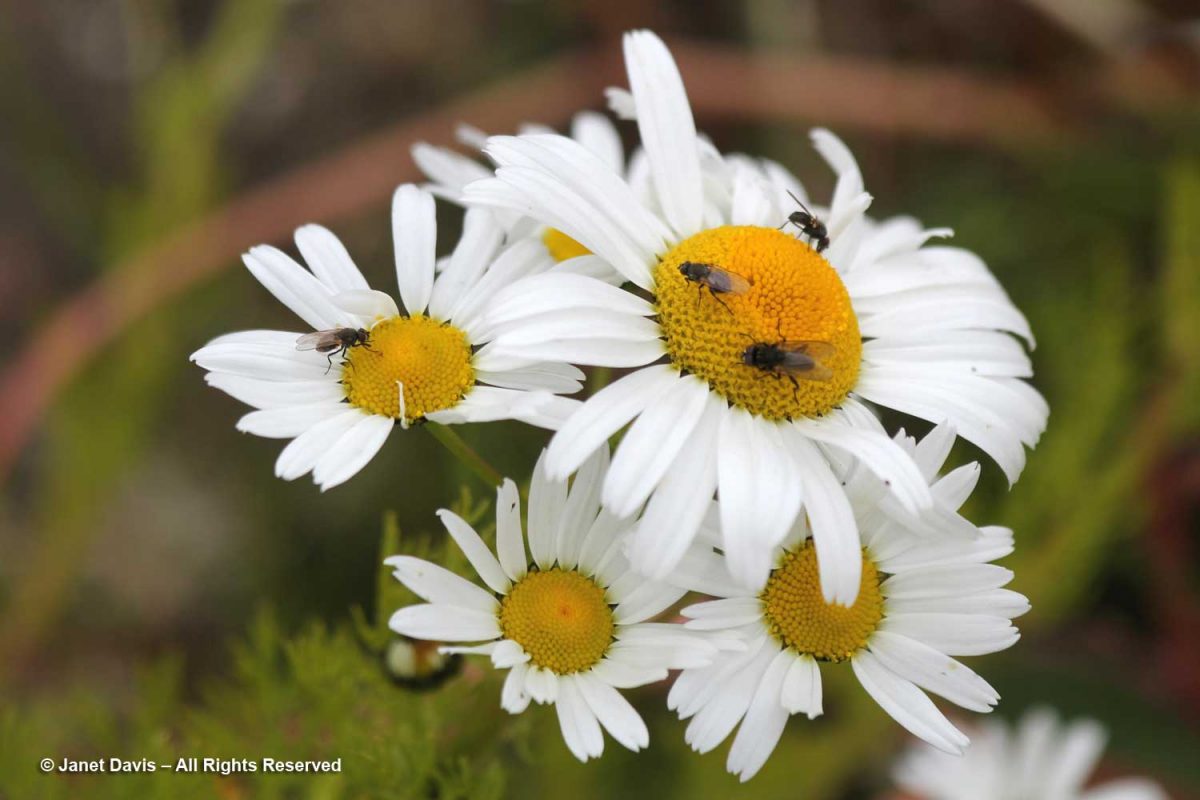
There was a beautiful drift of lupines, but this species, Nootka lupine (Lupinus nootkatensis), is native to northern British Columbia, Alaska and the Aleutians is considered an invasive exotic in the Eastern Arctic.
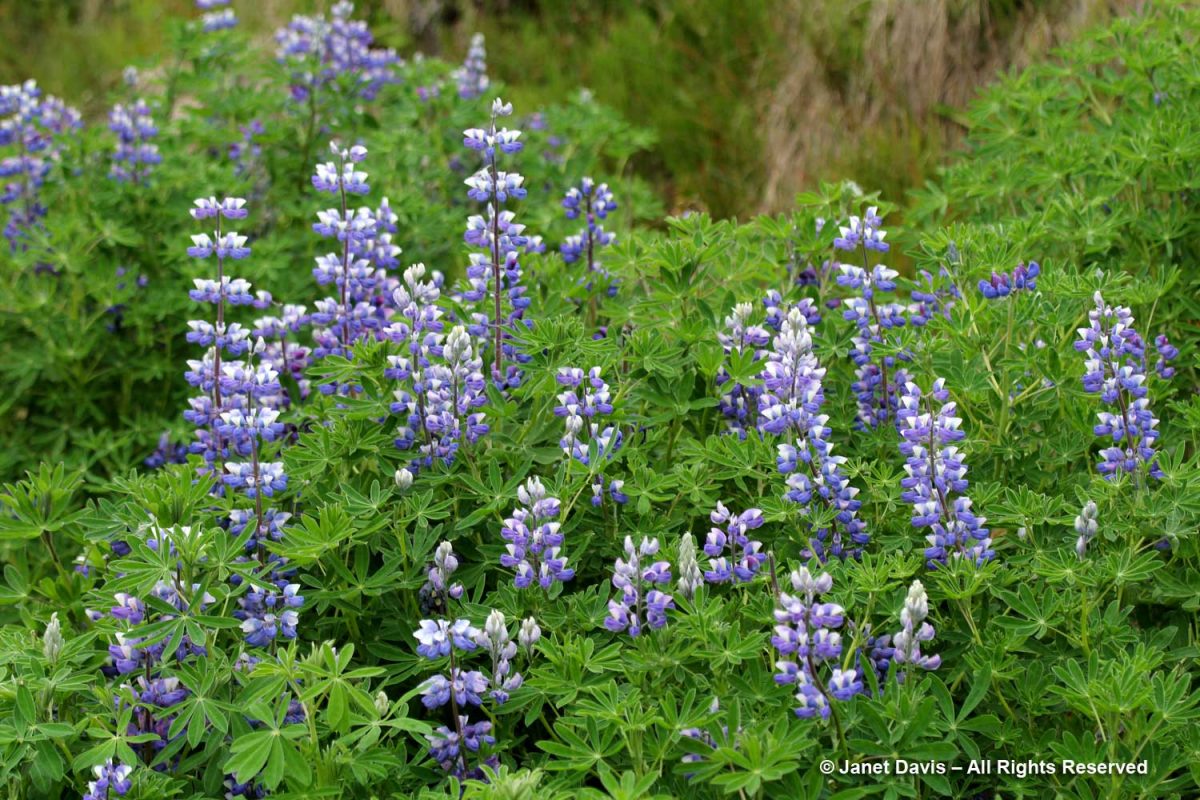
Up the hill behind the picturesque old boats was Sisimiut’s “Old Church” or Bethel Church, consecrated in January 1775.
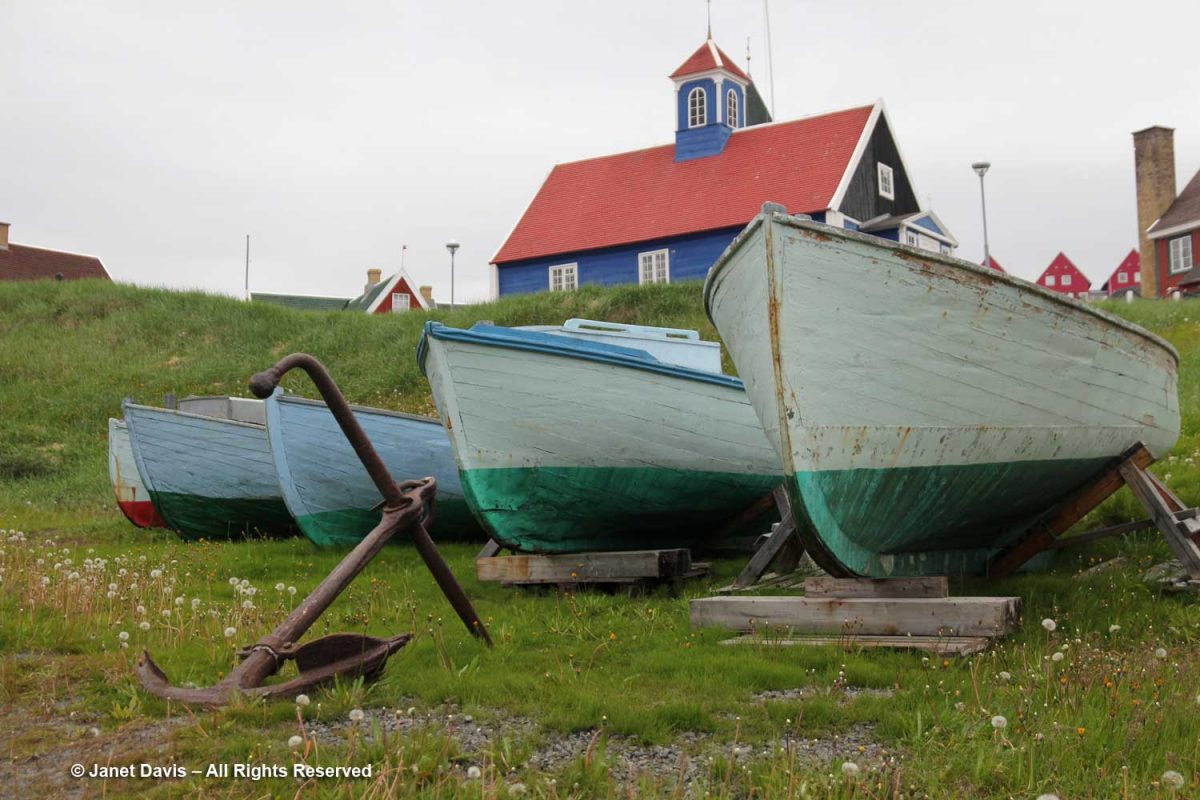
Nearby was the “New Church”, consecrated in 1926.
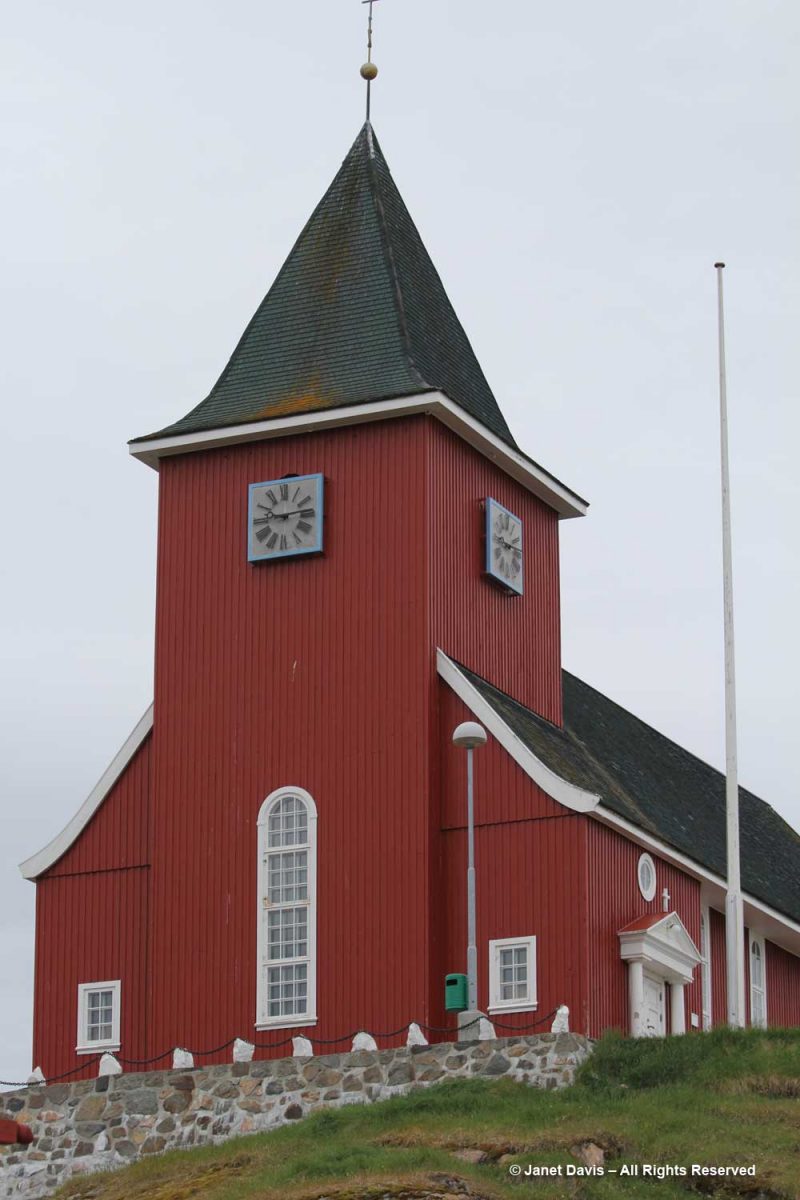
We met Sisimiut residents walking down the road….
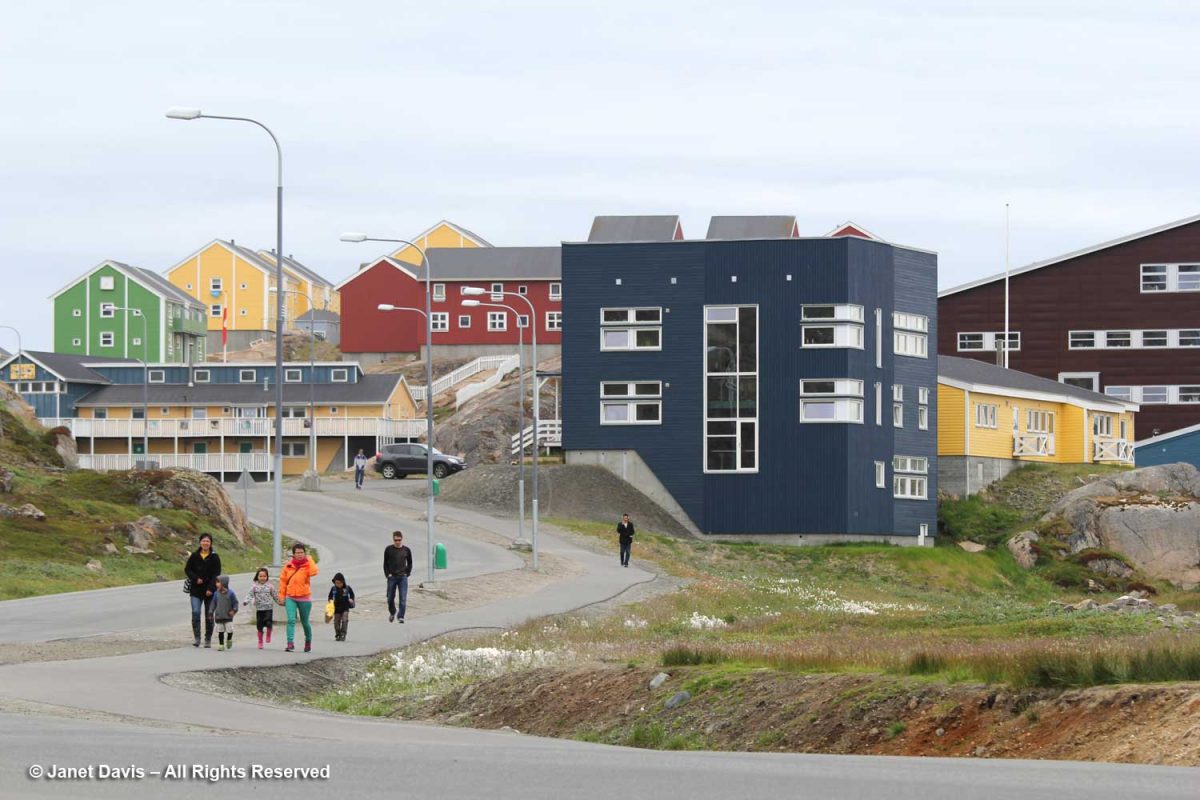
…. and saw some riding bicycles.
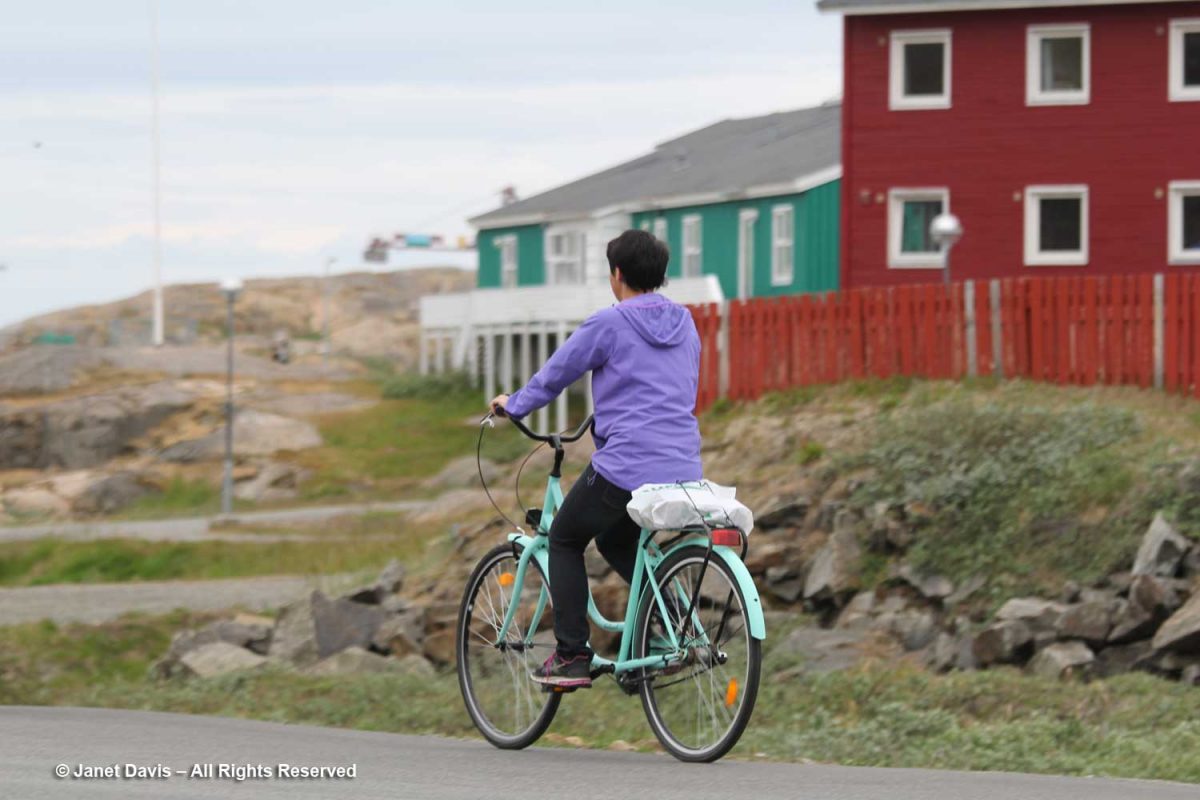
There was even a bus in Sisimiut!
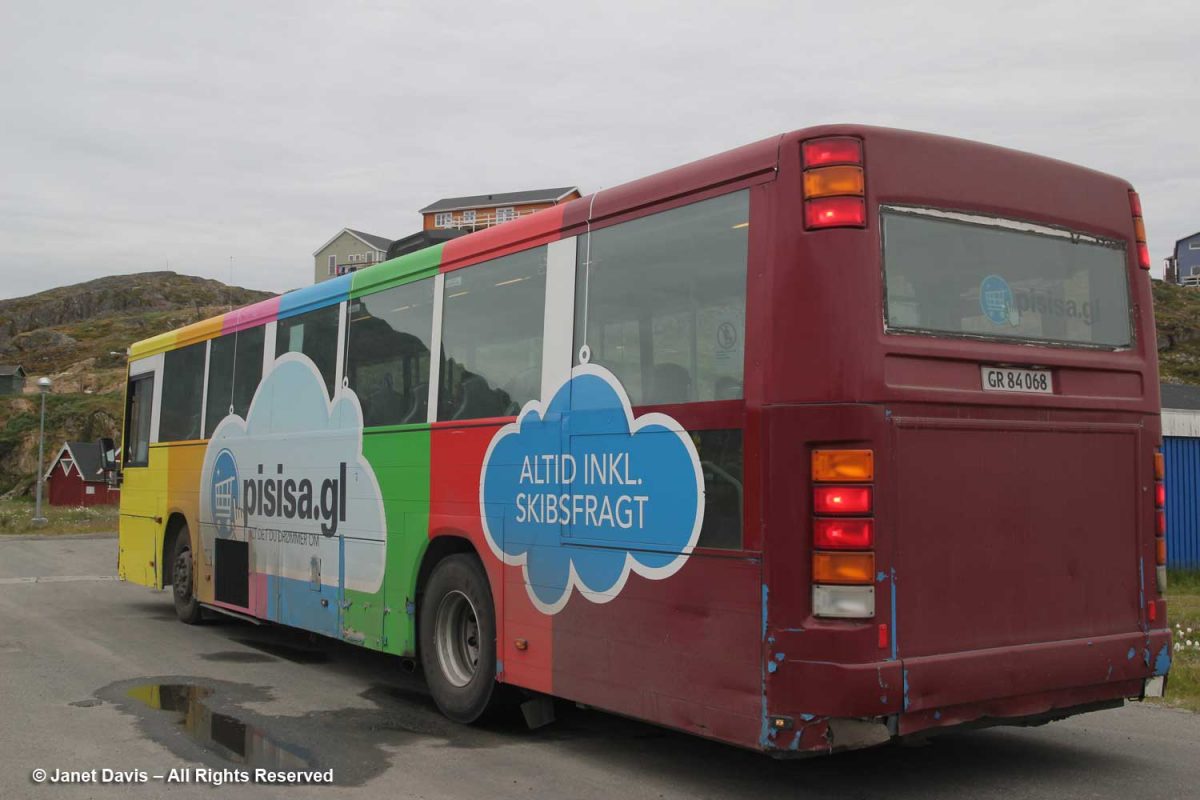
The Taseralik Cultural Center (Kulturikkut) is a beautiful building on the shore of Nalunnguarfik Lake. The center hosts concerts, theatre and art shows.
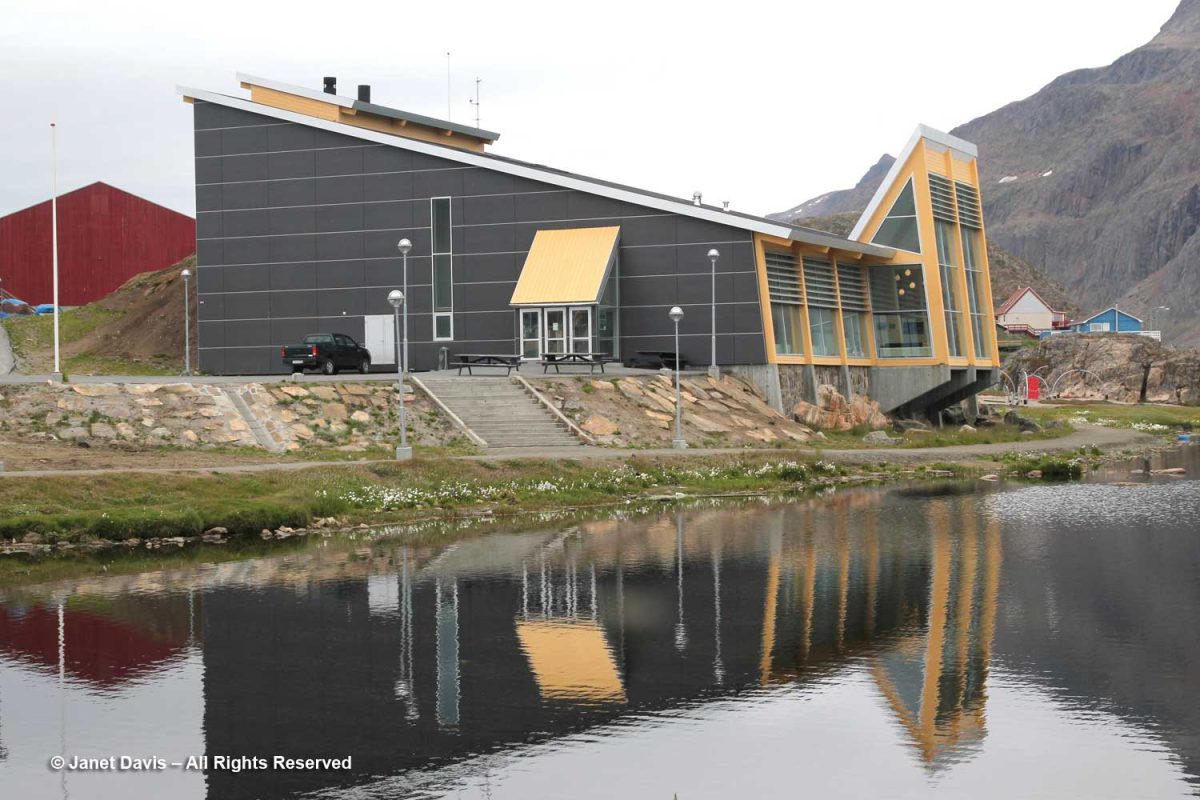
I loved this reflection of a neighbouring building in the lake.
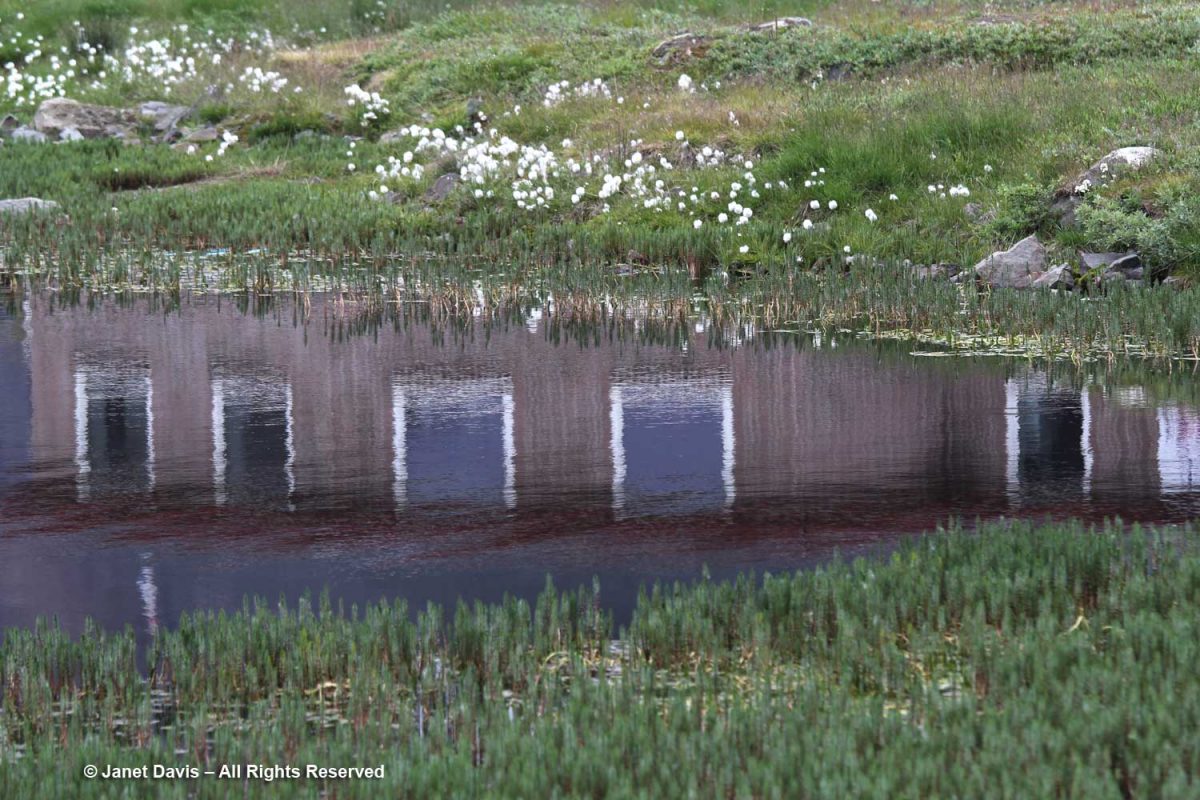
Mare’s tail (Hippuris vulgaris) is a circumpolar marginal aquatic plant and it offers food for….
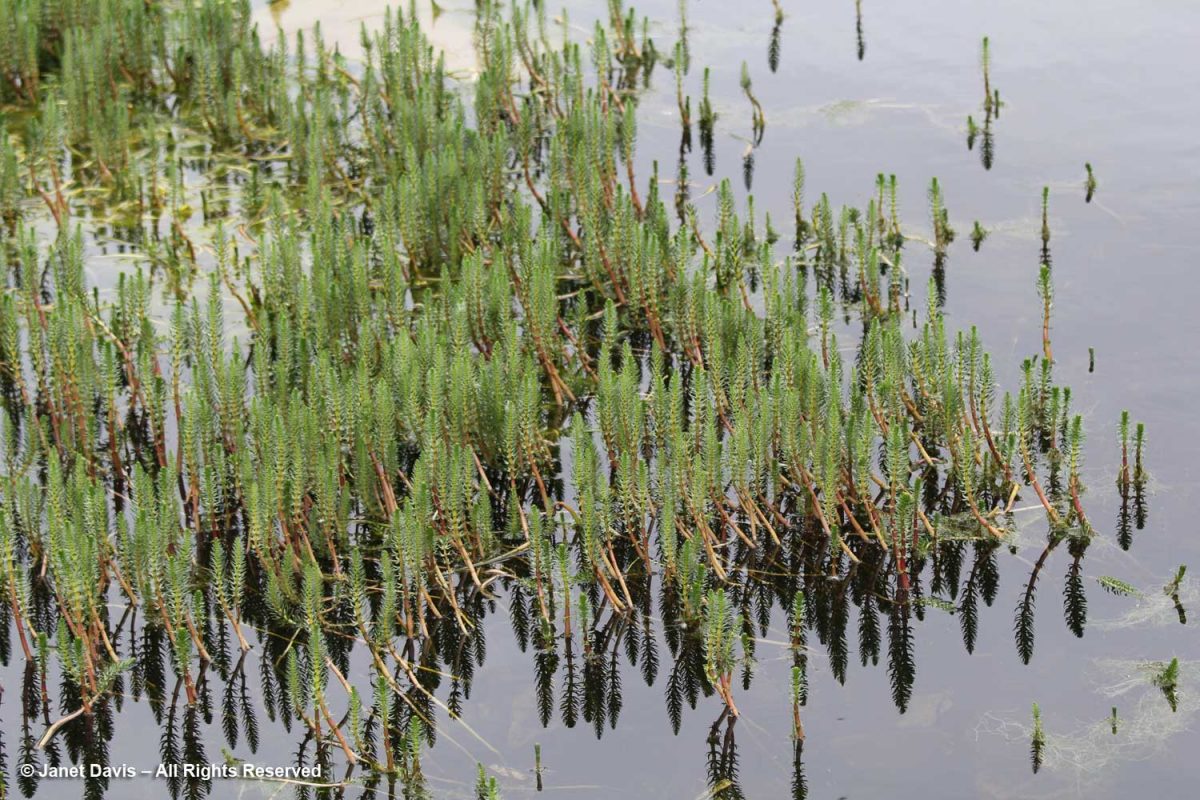
….. ducks!
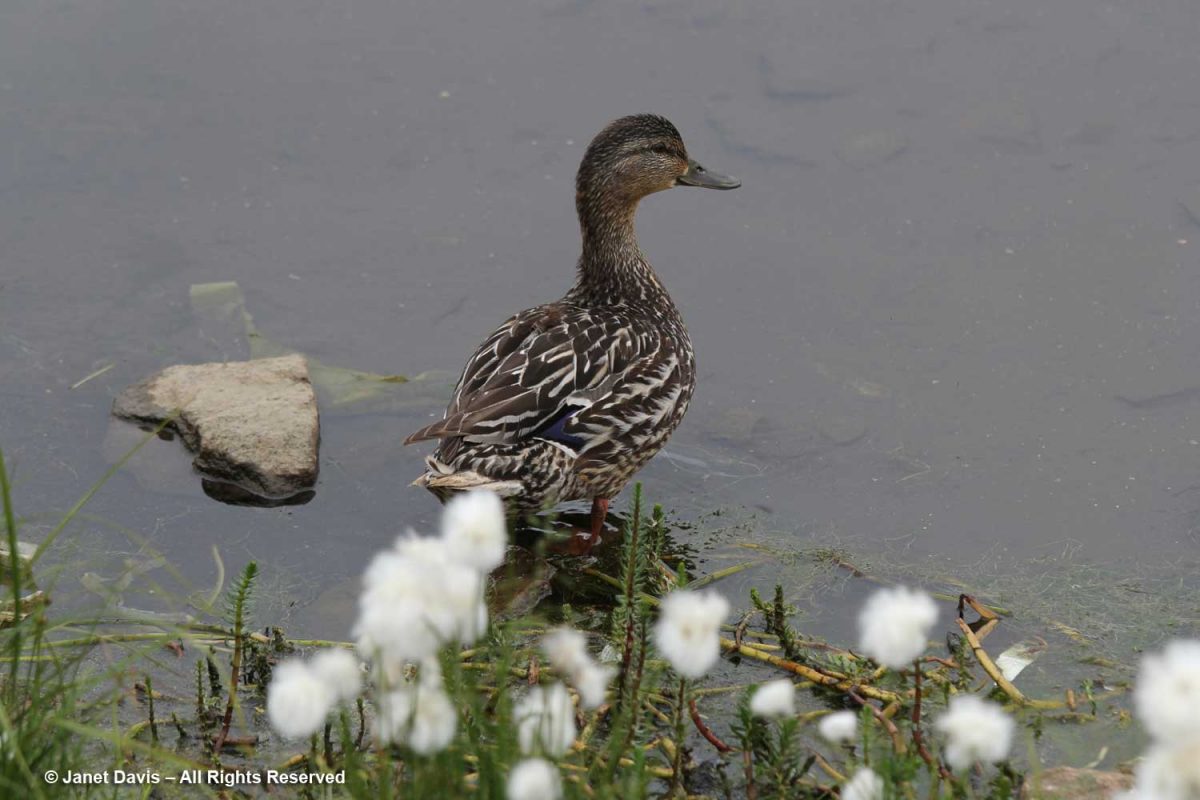
We saw a variety of traditional earthen/turf huts in Greenland. This one was behind a house…. maybe a root cellar, storage for firewood or a garden shed?
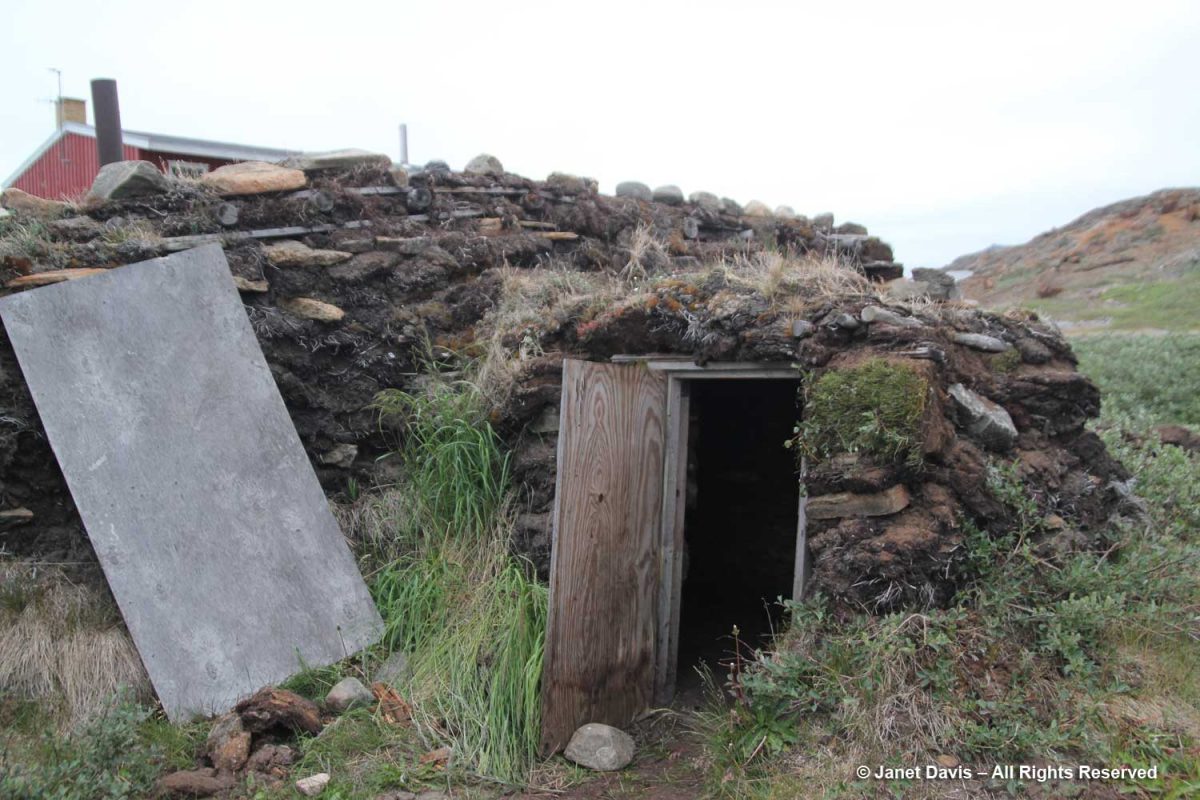
Hunting trophy? I suspect it’s a caribou jawbone.
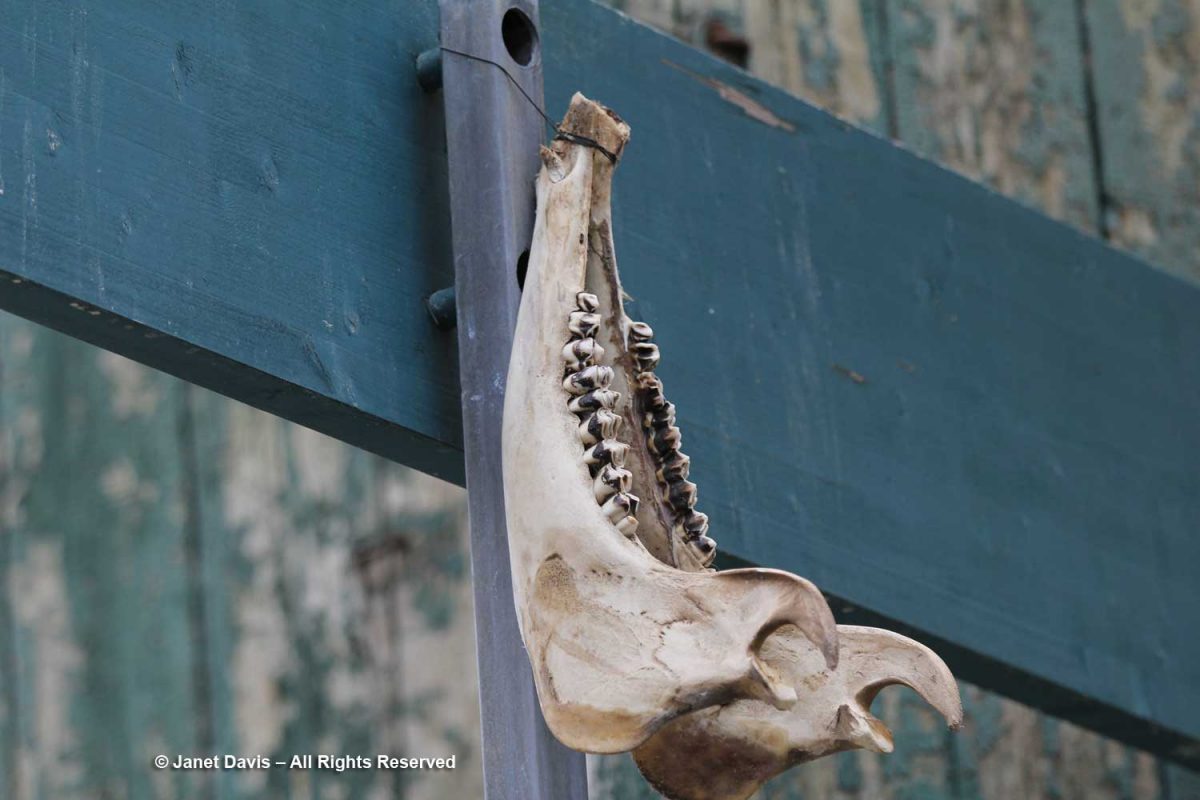
At one time, sleds and sled-dogs were essential to hunting and fishing in Greenland, but that has changed in the past few decades. Today, sledding is mostly a tourist activity and hunters and fishermen use snowmobiles (which used to be banned for hunting in Greenland).
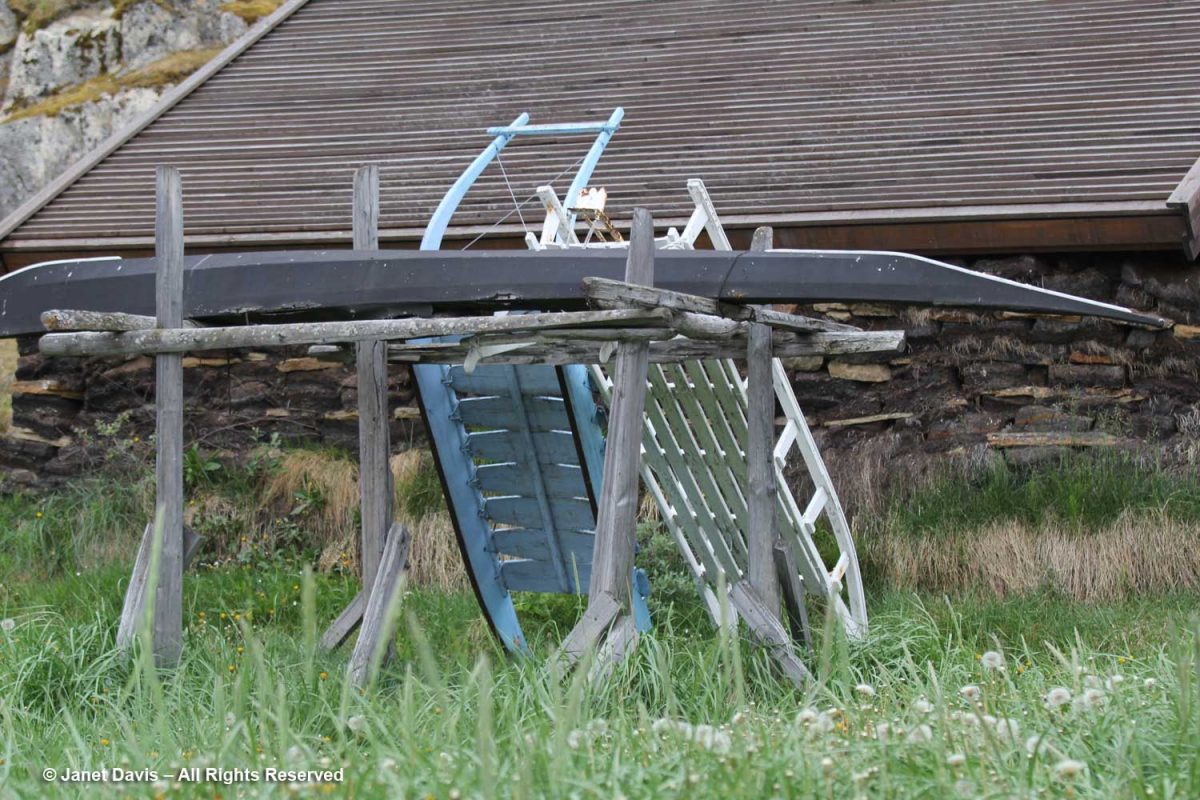
Nevertheless, we were interested to tour the valley where the sled dogs are kept, their numbers rapidly depleting – to the consternation of cultural historians. Come the winter, they will be teamed in front of sleds for tourism sledding tours.
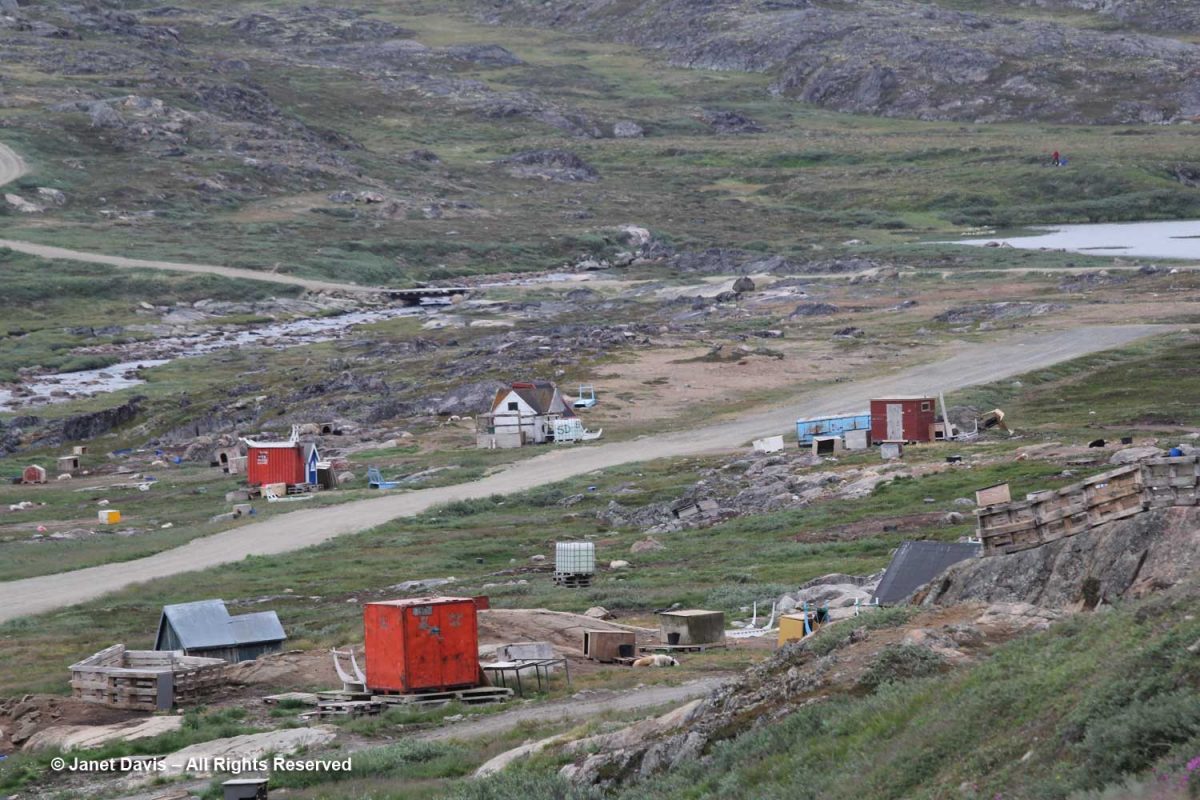
The Arctic Circle near Sisimuit is the southernmost point in Greenland where sled dogs (Canis familiaris borealis) may be used, i.e. the point at which sea ice is present in winter. South of here, no sled dogs may be owned, owing to the dog’s wild temperament, which can be dangerous, and also to keep the breed as pure as possible. Similarly, no non-sled-dogs can be owned north of the Arctic Circle. These are not at all like Alaskan sled dogs, which are mixes of husky, Malamute, Samoyed and other breeds.
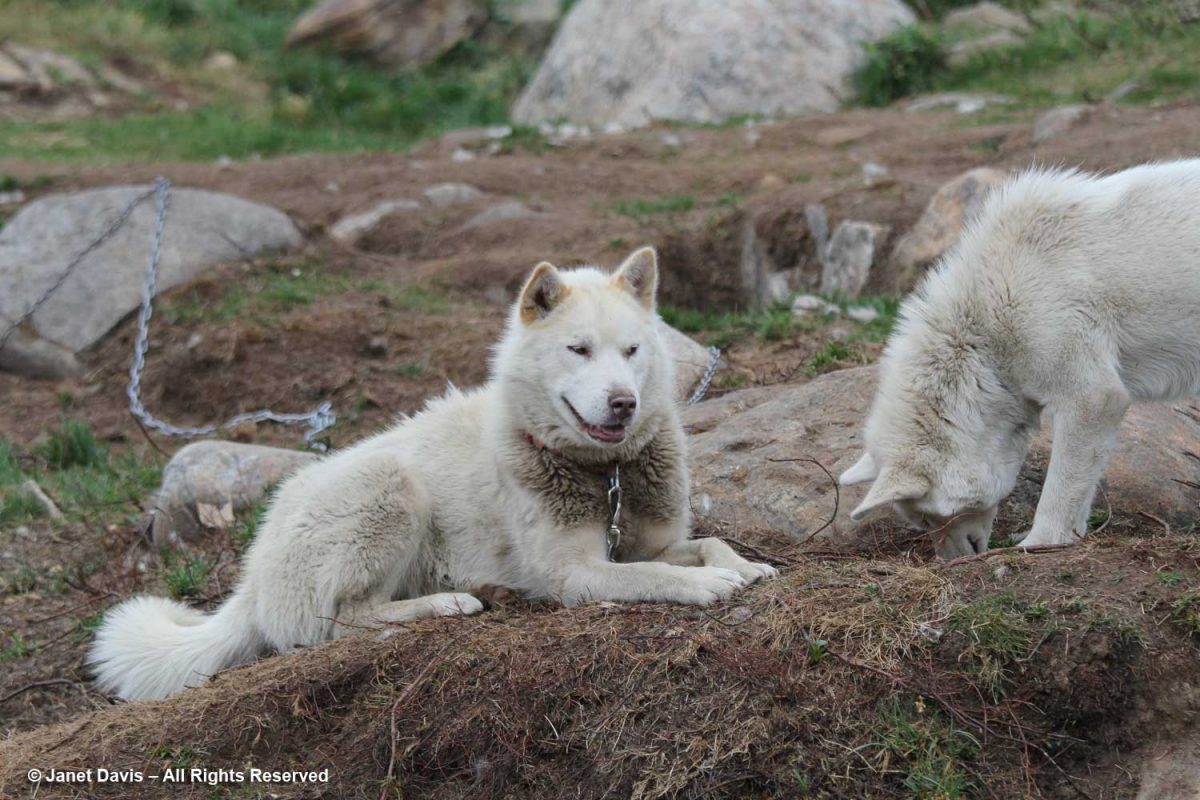
They are not pets, they are labourers, and no one was petting them.
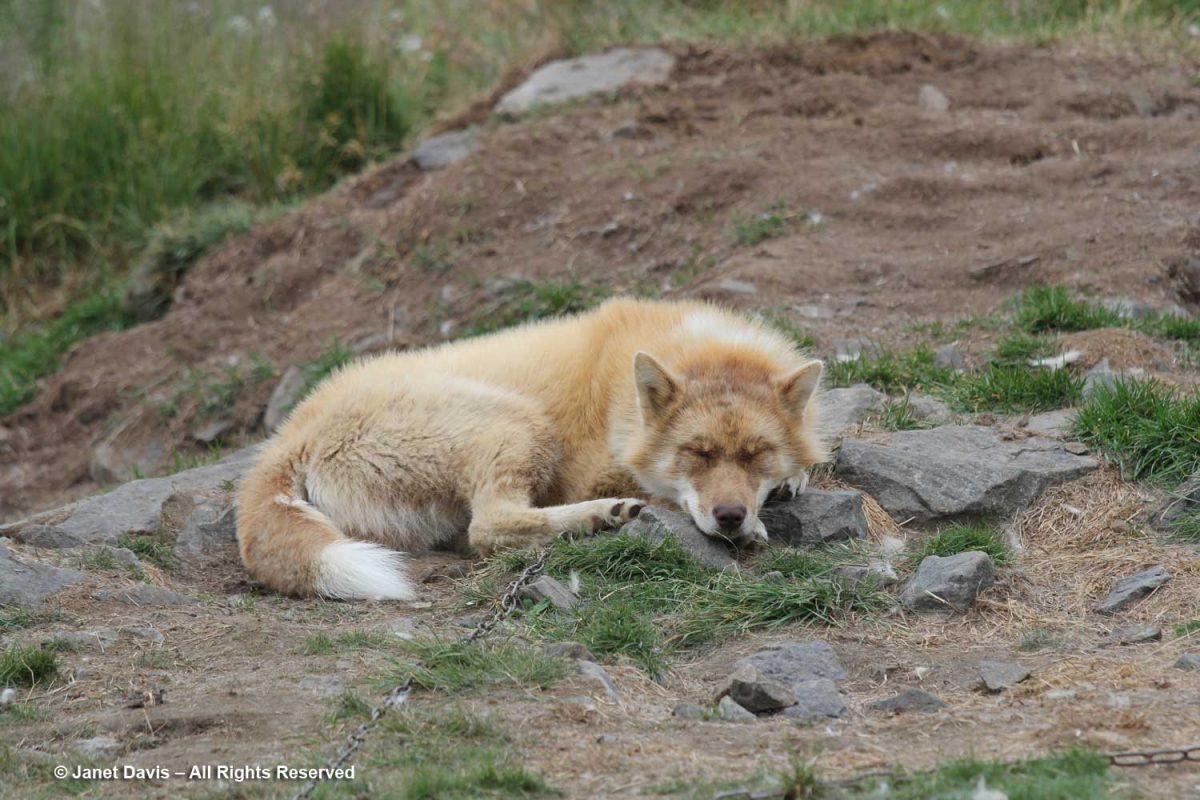
I was intrigued to see a little group of Icelandic horses in the valley too. Though only the size of ponies, they are long-lived and hardy.
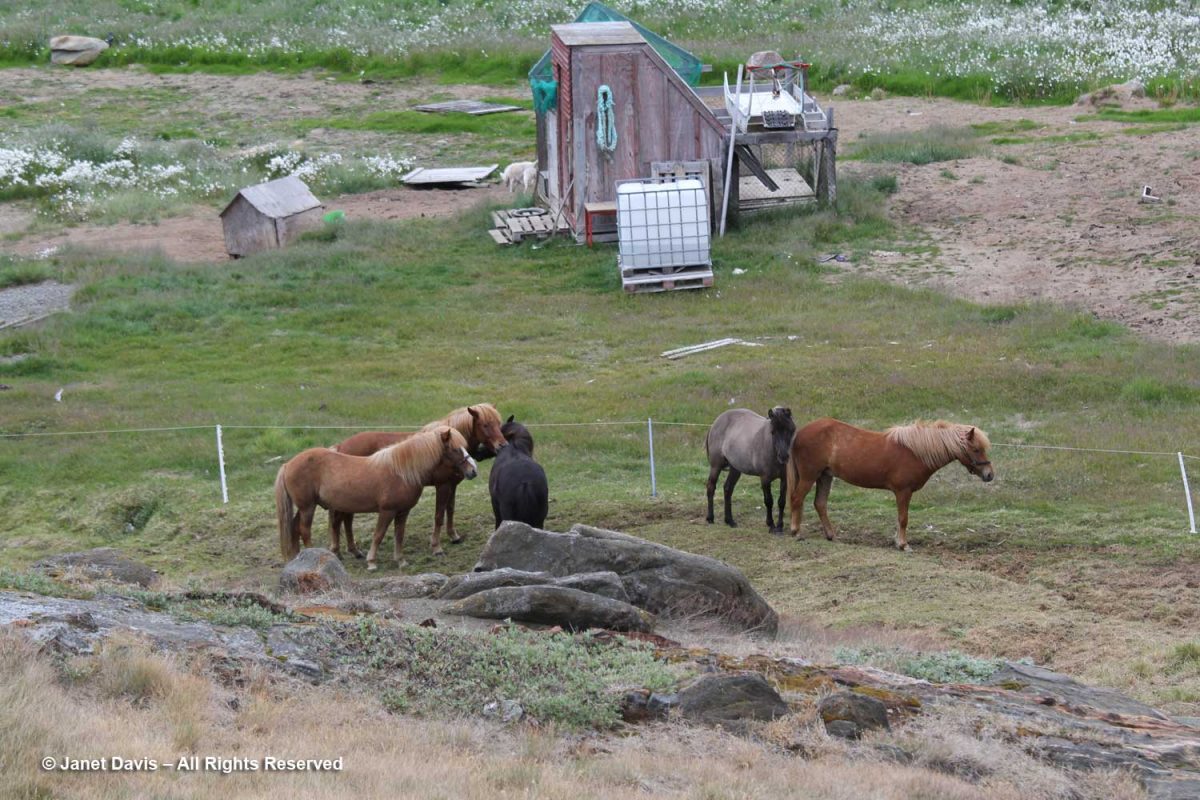
Circling back, we stopped at a quiet bay enclosed by ancient rock outcrops. The water surface was so still, the reflections were mesmerizing.
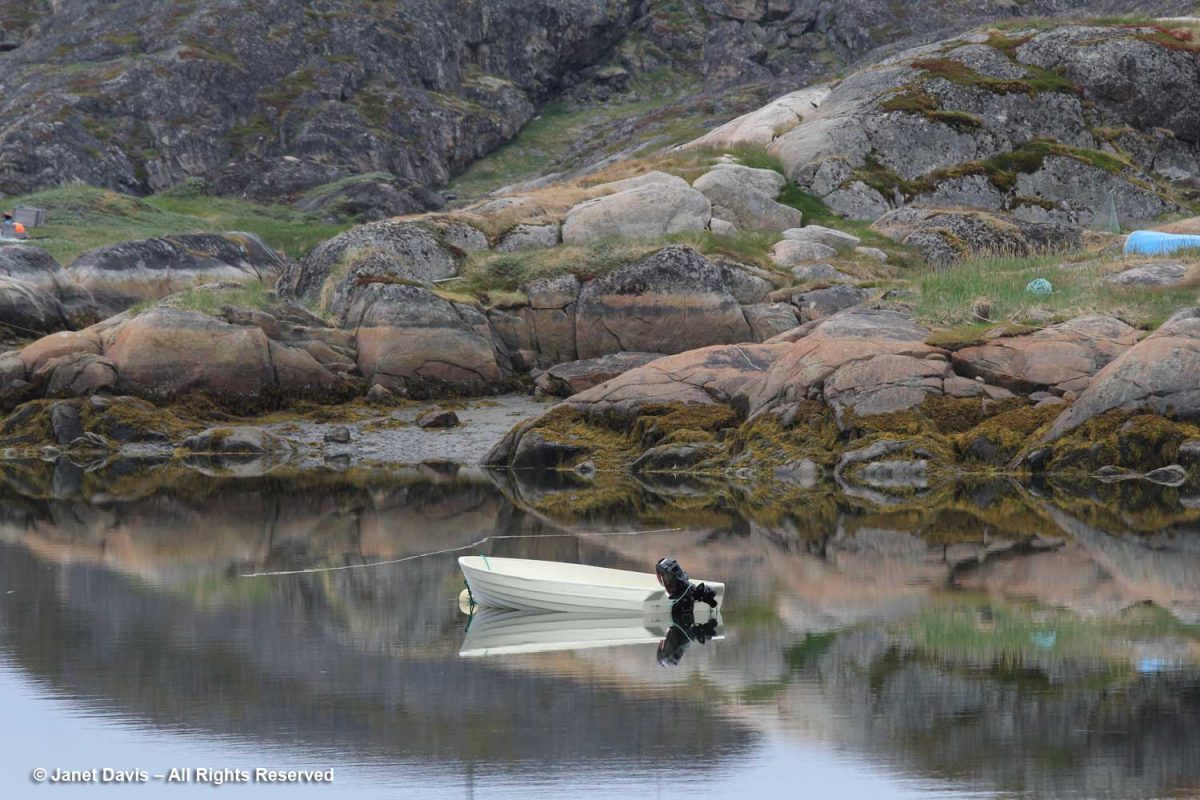
I could have stayed there all day, photographing.
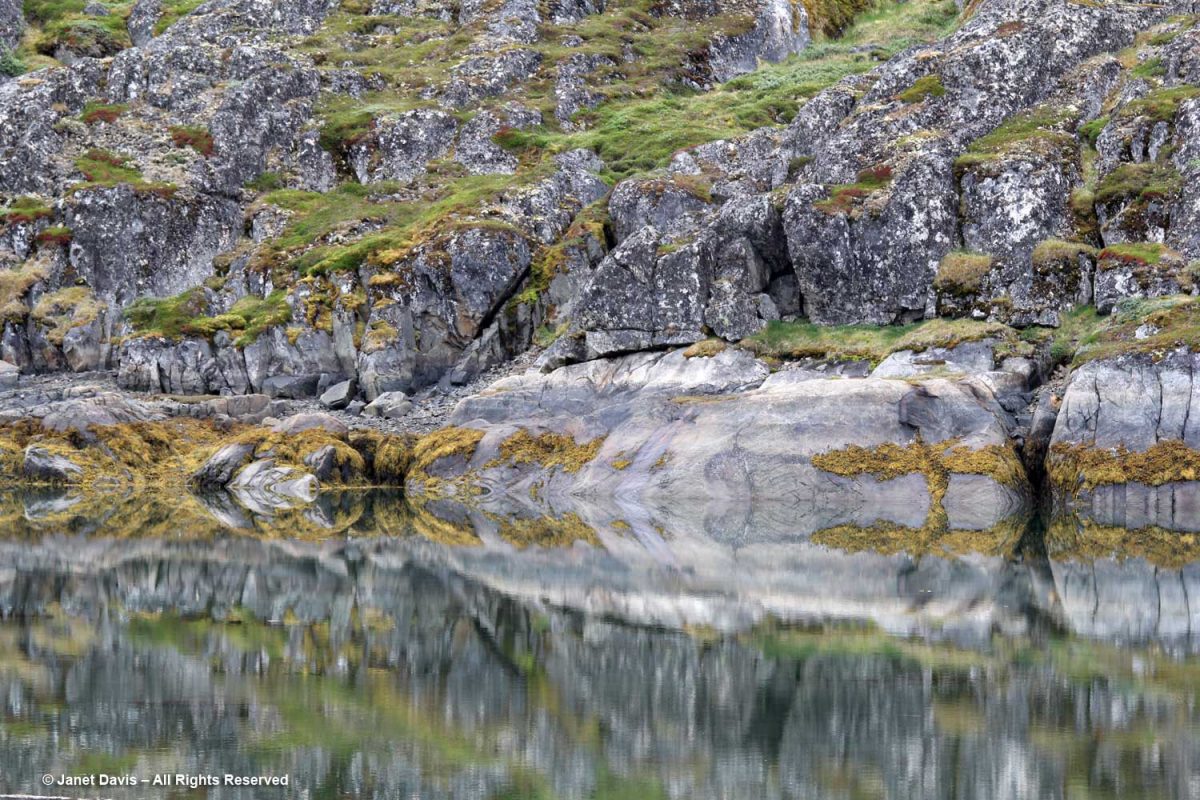
According to geologists, the rocks here in West Greenland are orthogneiss basement aged between 2.87 – 2.81 Ga, Interestingly, some of the oldest rocks on the planet – 3.8 – 3.9 Ga – have been found in the Isua Greenstone Belt near the capital Nuuk.
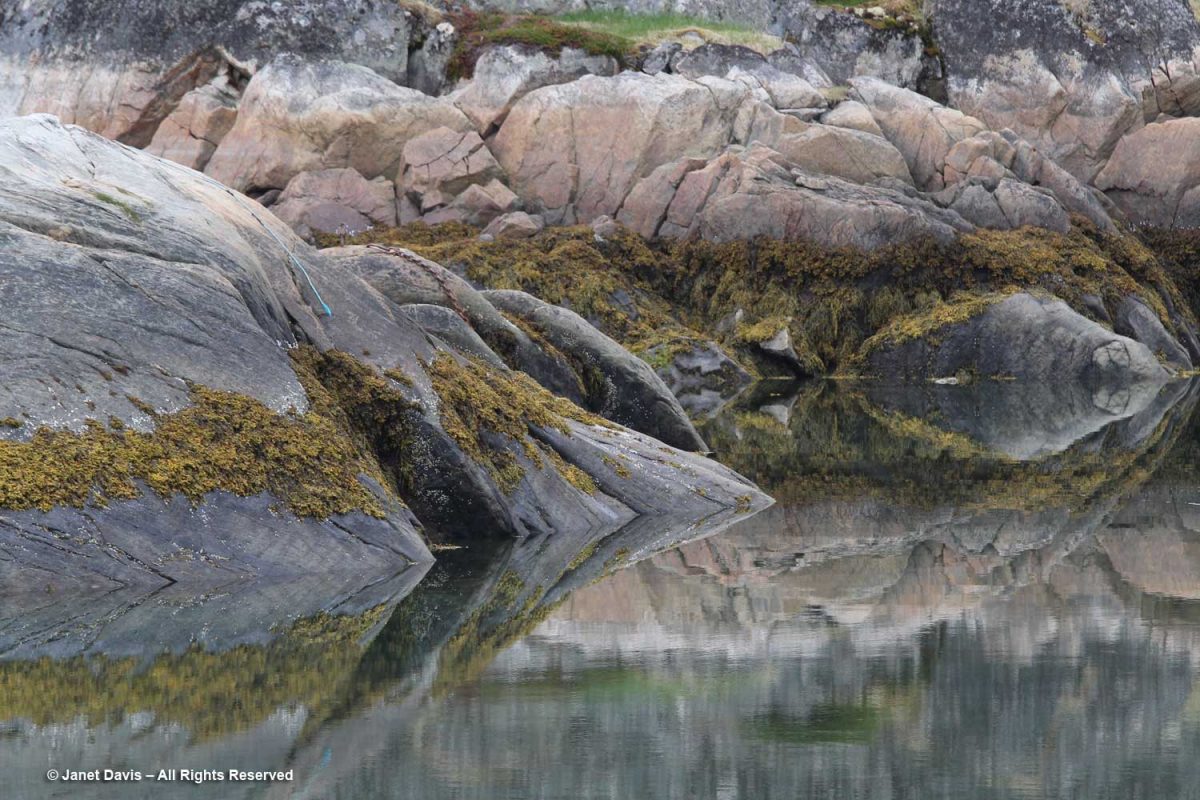
Heading back towards the ship, we visited a store that sold fishing gear and repaired nets.
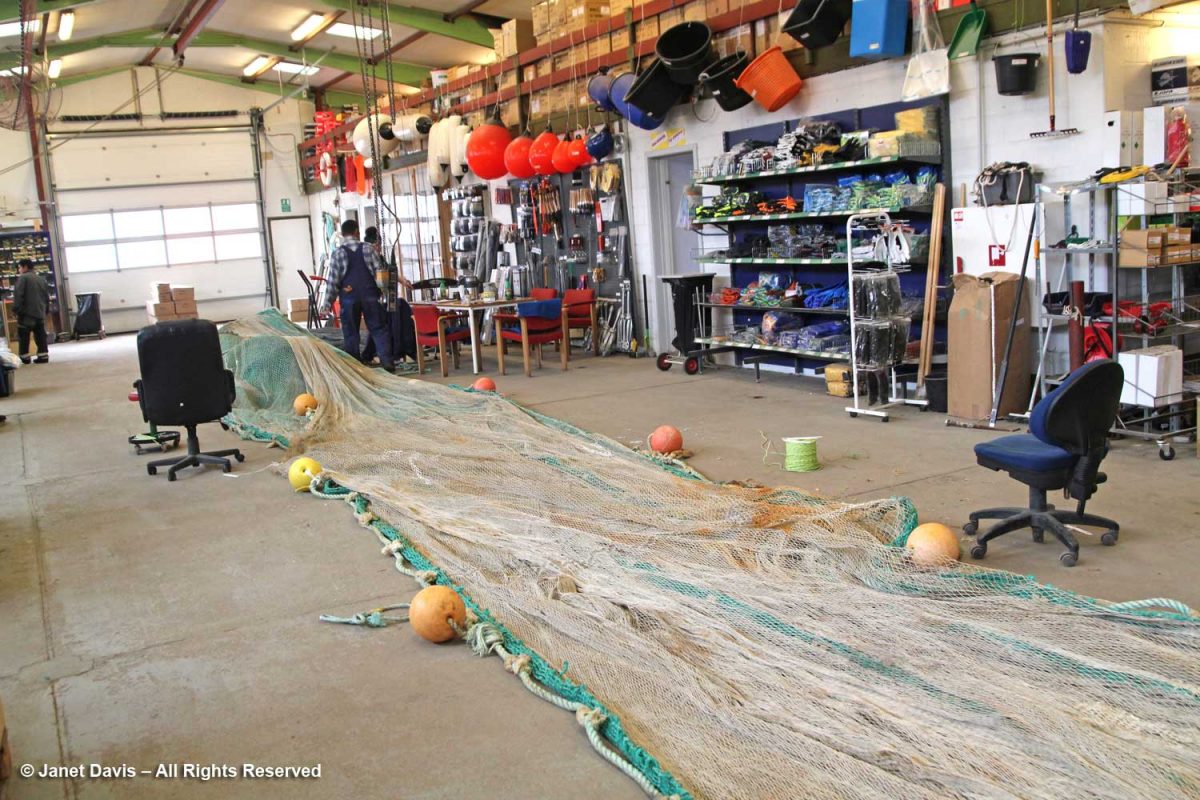
And we popped into a market that sold freshly-dug potatoes…..
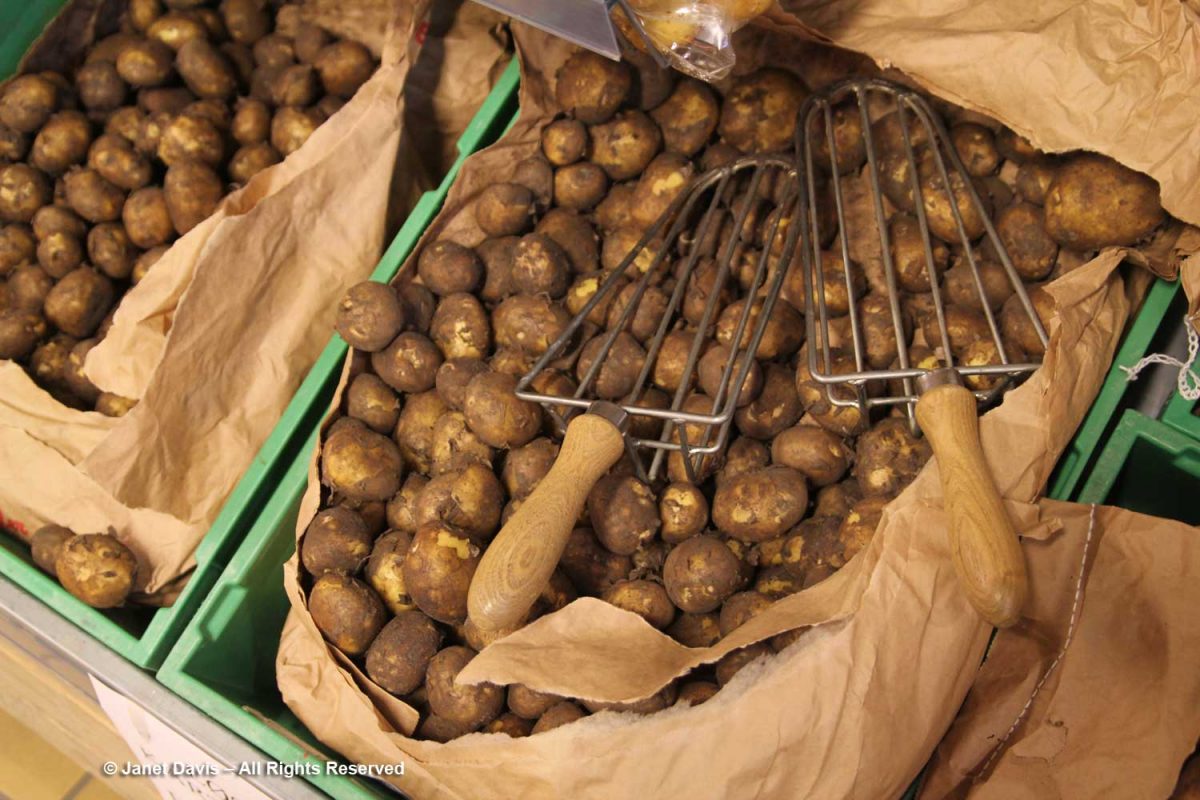
….. and all manner of harp seal (Pagophilus groenlandicus) parts.
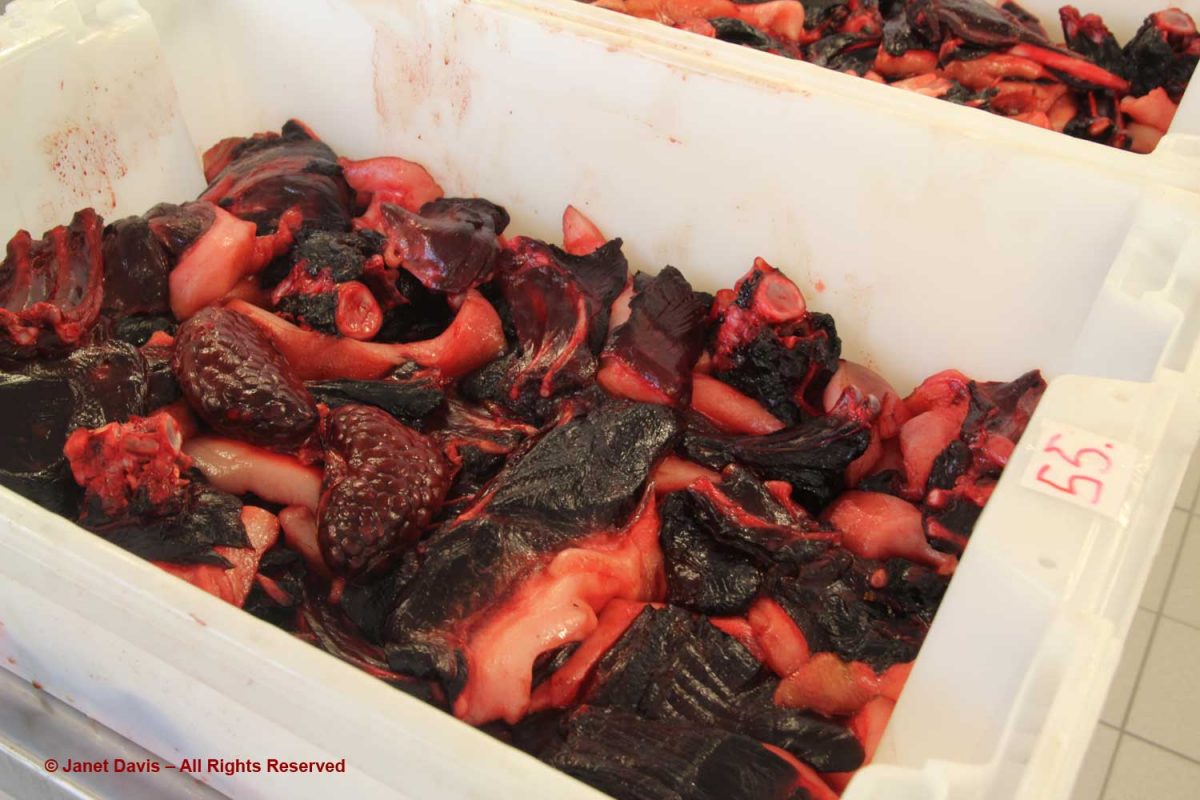
As we were climbing the stairs to board the ship, I turned to see a couple of Sisimiut fishermen coming up the steps behind me…..
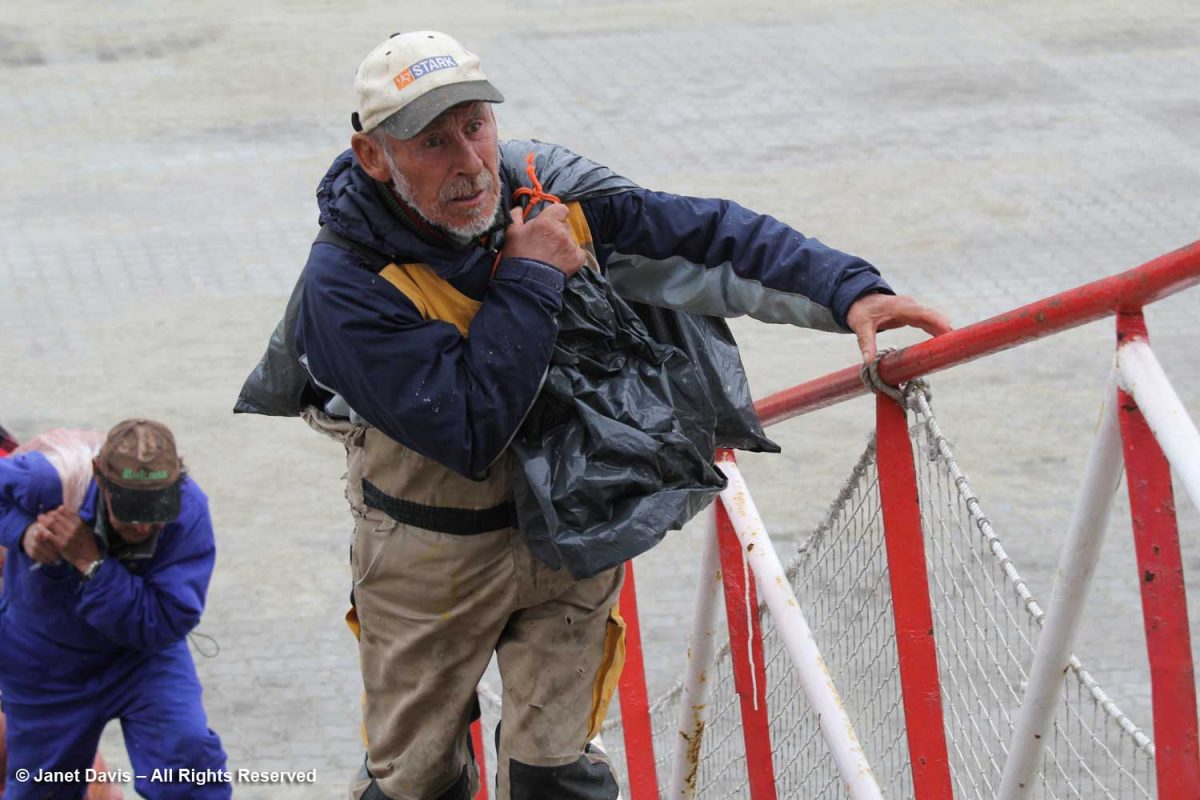
….. carrying big bags of freshly-caught Acadian redfish (Sebastes fasciatus). I knew what would likely be on the menu soon!
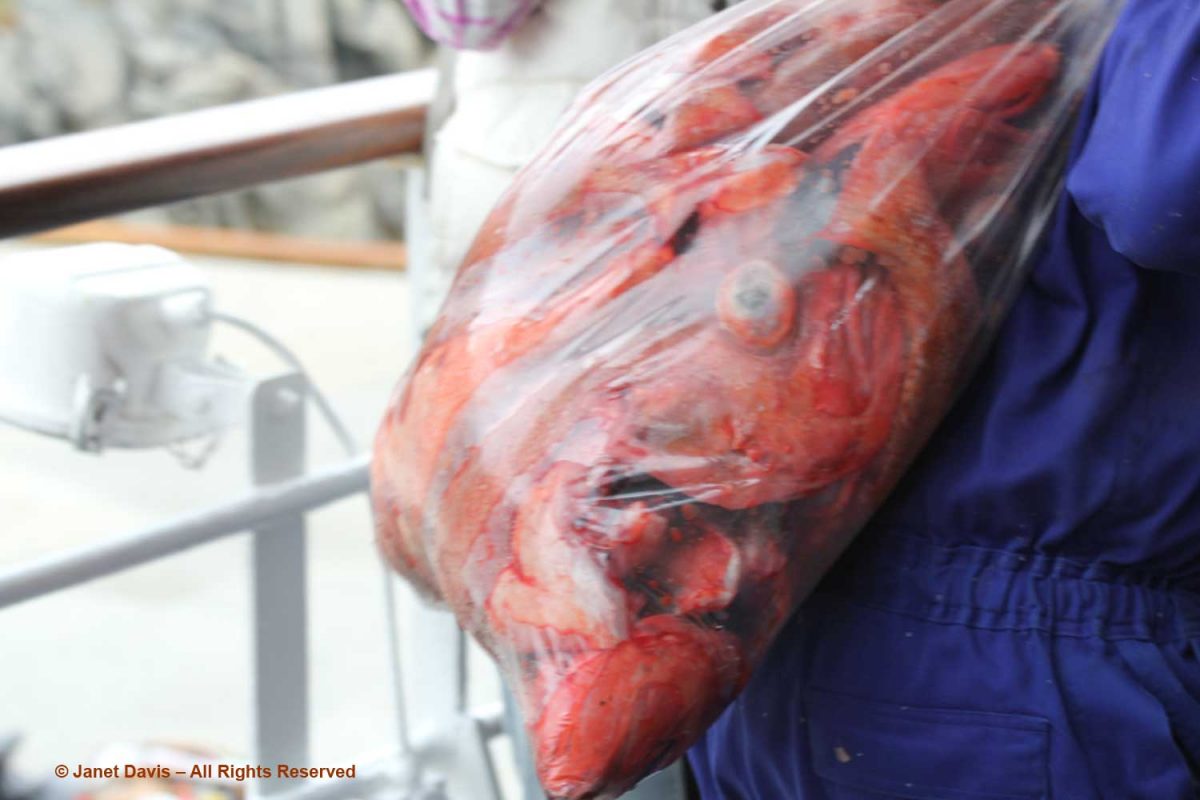
After dinner, we convened in the ship’s lounge for a lecture from ecologist and Yellowstone-based bear specialist, Jim Halfpenny, with sobering statistics on the year-to-year loss of Greenland’s permanent ice cap.
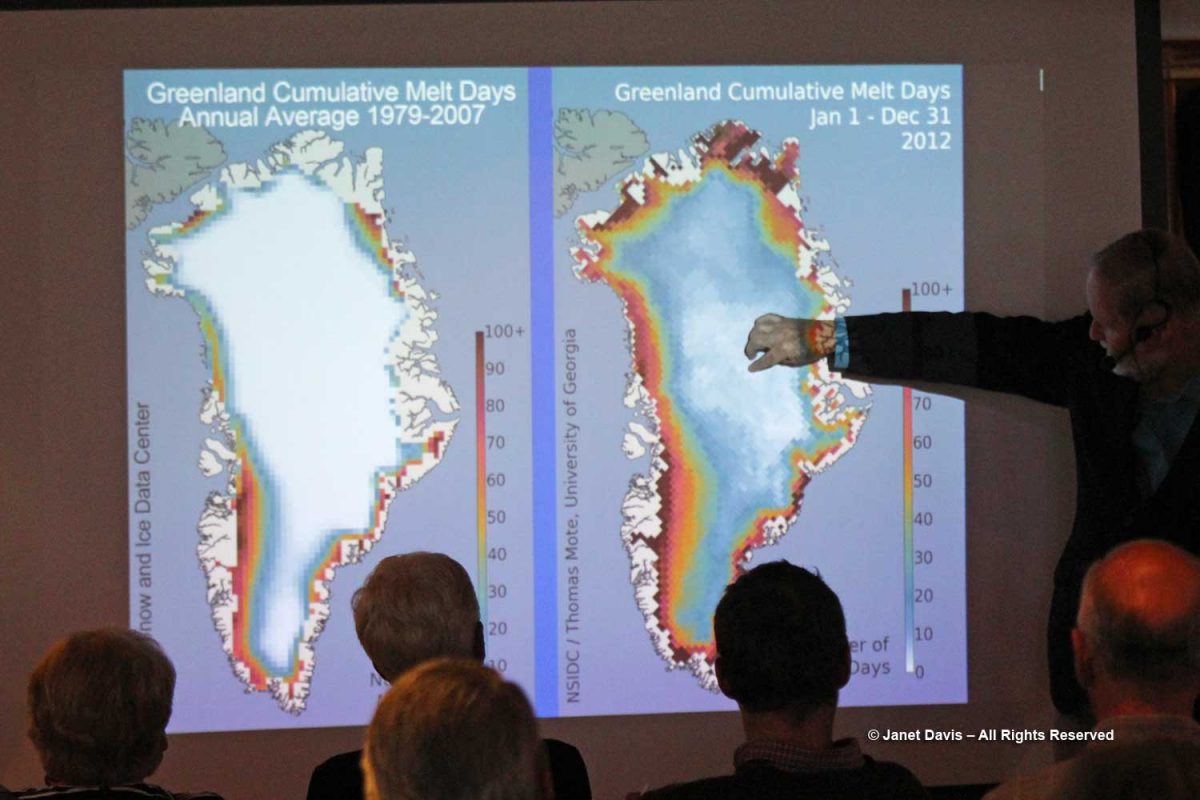
He also explained the albedo effect. To quote from the Arctic Warming website: “A positive feedback mechanism is the albedo effect. The Arctic’s highly reflective snow and ice cover reflects the sun’s energy back into space, keeping the Arctic cold and balancing Earth’s regional temperatures. As the white Arctic snow and ice melts it is replaced by darker water and land surfaces, which absorb more energy from the sun, further warming the surface of the region and accelerating Arctic and global warming. This self-reinforcing loop is called the albedo affect and it is one of many positive feedback mechanisms. As dark ocean water absorbs heat, it expands. This thermal expansion, along with freshwater runoff from melting ice sheets and glaciers into the ocean, will cause sea levels to rise.”
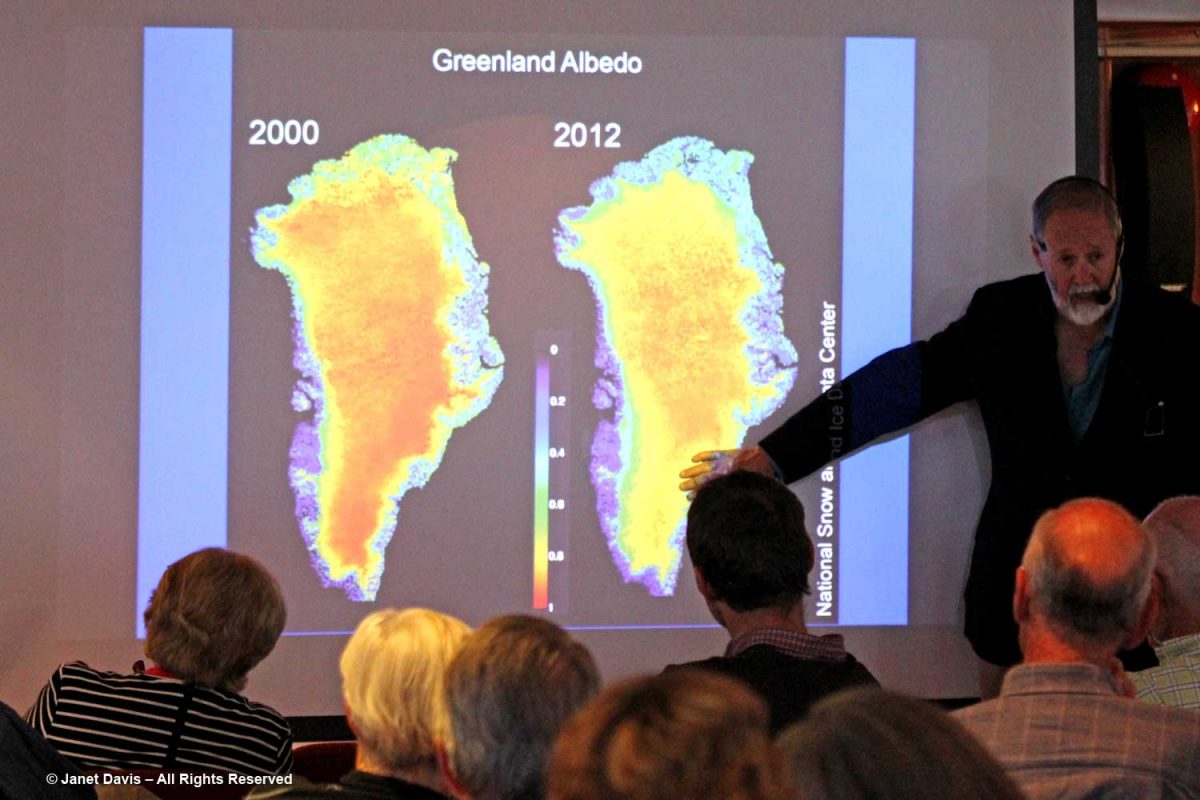
Jim’s lecture prepared us for our visit the next day to Ilulissat, where we would tour the renowned UNESCO heritage site at Sermeq Kujalleq (Jakobshavn Icefjord). That spectacular day — one of the most thrilling I’ve experienced in all my travels — is coming up in my next blog!

I’ve only recently discovered your site, and I’ve been catching up on past postings. I’ve enjoyed and learned from every single beautiful and inspiring post. I appreciate your generosity in sharing not only your own work, but also links/ideas for other worthwhile sites.
Sue…. what kind words. Thank you so much. It means a great deal to receive positive comments like yours.